


City politics, pages 4-6
Mental health, page 7
Painting
The Rock, page 8
First elected female Smokey, page 15

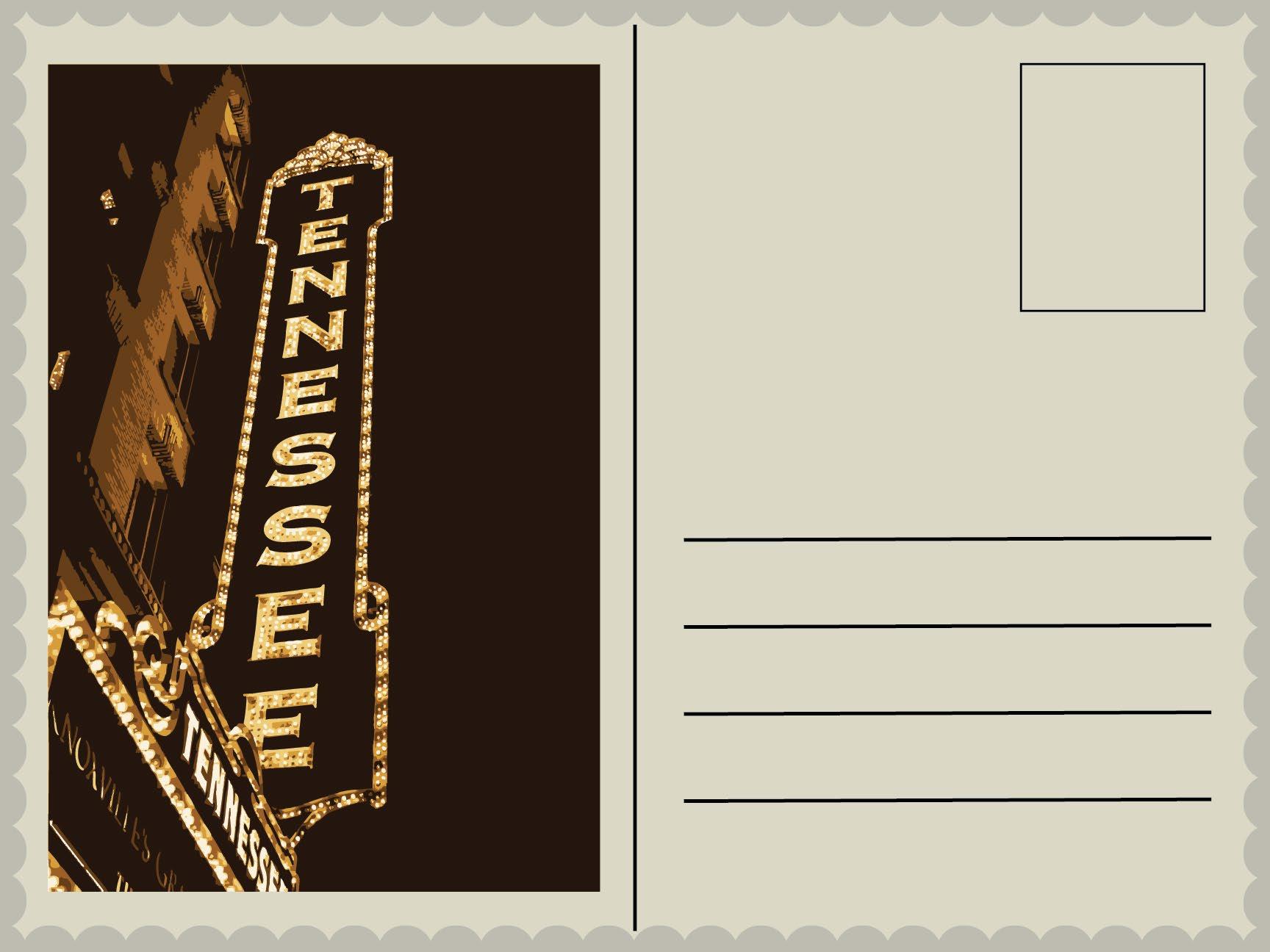





City politics, pages 4-6
Mental health, page 7
Painting
The Rock, page 8
First elected female Smokey, page 15




EDITOR-IN-CHIEF: Caden Dyer
MANAGING EDITOR: Ansley Graves
COPY CHIEF: Harper Brabson
NEWS EDITOR: Patrick Busch
ARTS & CULTURE EDITOR: Emma Caskill
SPORTS EDITOR: Trevor McGee
ASSISTANT SPORTS EDITOR: Alex Sarkis
OPINIONS EDITOR: Natalie Dripchak
PHOTO EDITOR: Jackson Clavier
DESIGN EDITOR: Lindsay Favre
ENGAGEMENT EDITOR: Sarah Portanka
AUDIENCE DEVELOPMENT EDITOR: Sophie Mehta
COVER DESIGN: Lindsay Favre, Photos by Jayden Randolph
PAGE DESIGNERS: Emma Fingeret, Ashley Cammarota, Renee Allen, Maya Williams, SaraJane Weber, Ava Balducci, Ava Edwards
GRAPHICS BY: Lindsay Favre, Renee
ADVERTISING MANAGER: Abigail Cheslock
ADVERTISING REPRESENTATIVE: Joe Slott
TO REPORT A NEWS ITEM OR SUBMIT A PRESS RELEASE, please email editorinchief@utdailybeacon.com or call (865) 974-2348
TO PLACE AN AD, please email admanager@utk.edu.
LETTERS POLICY: Letters to the Editor must be exclusive to The Daily Beacon and cannot have been submitted to or published by other media. Letters should not exceed 400 words and can be edited or shortened for space. Letters can also be edited for grammar and typographical errors, and Letters that contain excessive grammatical errors can be rejected for this reason. Anonymous Letters will not be published. Authors should include their full name, mailing address, city of residence, phone number and e-mail address for verification purposes. Letters submitted without this information will not be published. The preferred method to submit a Letter to the Editor is to email the Editor-in-Chief.
CORRECTIONS POLICY: It is the Daily Beacon’s policy to quickly correct any factual errors and clarify any potentially misleading information. Errors brought to our attention by readers or staff members will be corrected and printed on page two of our publication. To report an error please send as much information as possible about where and when the error occurred to managingeditor@utdailybeacon. com, or call our newsroom at (865) 974-5206.
The Daily Beacon is published by students at The University of Tennessee on Wednesday during the fall and spring semesters. The offices are located at 1345 Circle Park Drive, 11 Communications Building, Knoxville, TN 37996-0314. The newspaper is free on campus and is available via mail subscription for $200/year or $100/semester. It is also available online at: www.utdailybeacon.com

On Nov. 11, Speaker of the Senate Campbell Butler welcomed the members of the Student Government Association’s Senate to their eighth session. During this meeting, the senate voiced their appreciation for veterans’ sacrifice and service, rules for future SGA elections were laid out, and a bill to increase engagement at music events was introduced.
The open town hall section of Tuesday night’s meeting gave nods to Veterans Day. During this time, Sen. Jed Baso presented a speech that illuminated the history behind the national holiday as well as expressed gratitude to veterans everywhere for their service.
Following the speech, members of the Rocky Top Student Veterans of America chapter shared a few words and gave special thanks to chapter president Sen. Kevin Ho for the work he has done for student veterans at UT.
“I joined ROTC (at UT) and because of that and actually living through what soldiers before me have to go through, I realized how important it is to recognize the people who came before you,” Baso said.
The 2026 Election Rules and Procedures were presented during the time of first readings. This document provides an overview of the election and voting guidelines for the Student Government Association. A general election schedule, campaigning rules and election violations were outlined.
Resolution: Promoting event awareness
Resolution 25-3, sponsored by Sen. Jake Dozier, aims to address student awareness of events taking place in the Natalie L. Haslam College of Music. This resolution encourages the college to notify students at least one week prior to events being organized. The resolution also recommends that the college create a newsletter to inform students of upcoming events.
“We (Natalie L. Haslam College of Music) just have such great events going on. … It’s so unfortunate that a lot of
people don’t know it,” Dozier said. “I feel like having at least a week’s notice would increase attendance, increase effectiveness within these great events and overall boost morale and bring together the fellowship within the college of music.”
The 2026 Rules and Procedures passed first readings and will now undergo review, and Resolution 25-3 was passed.
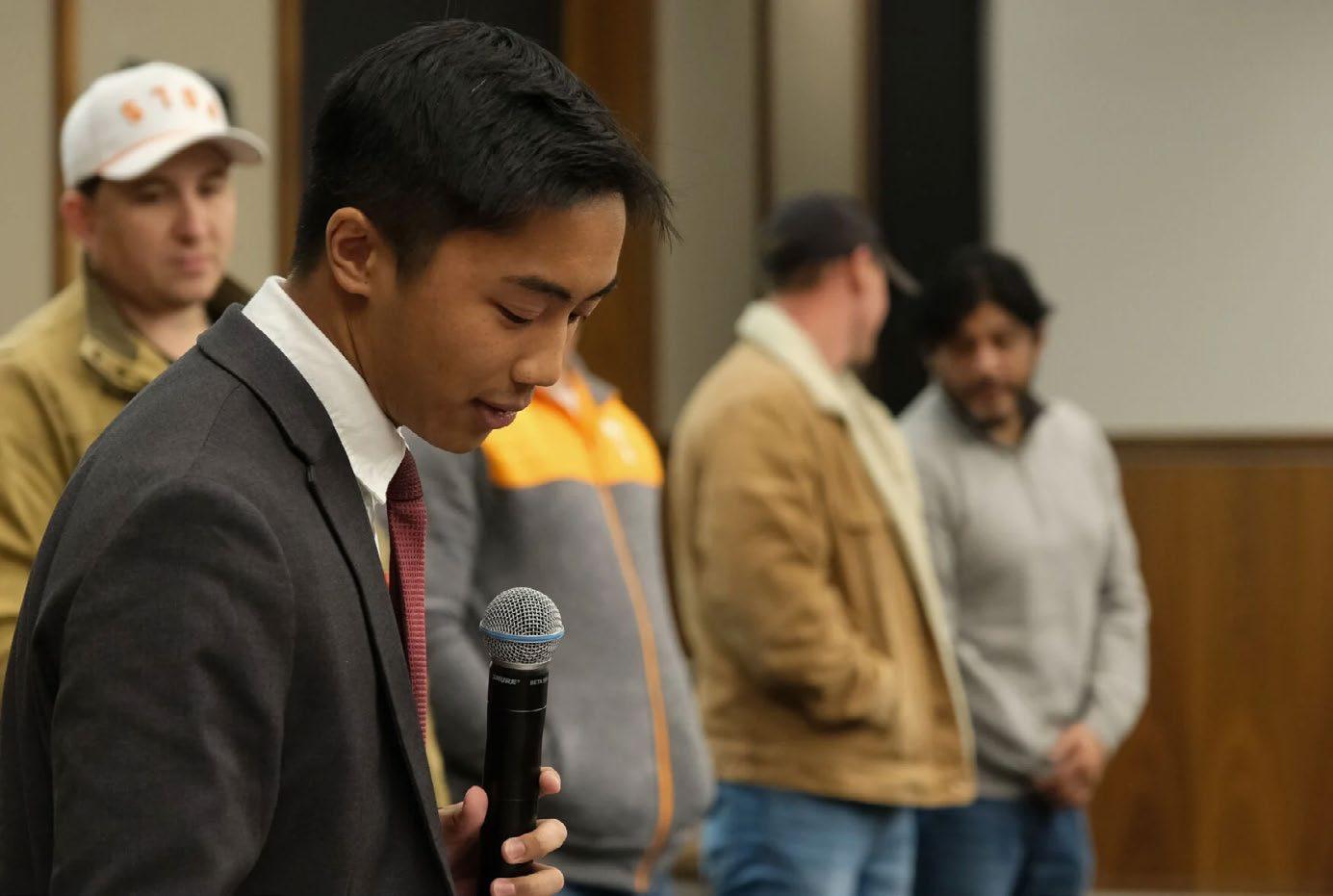
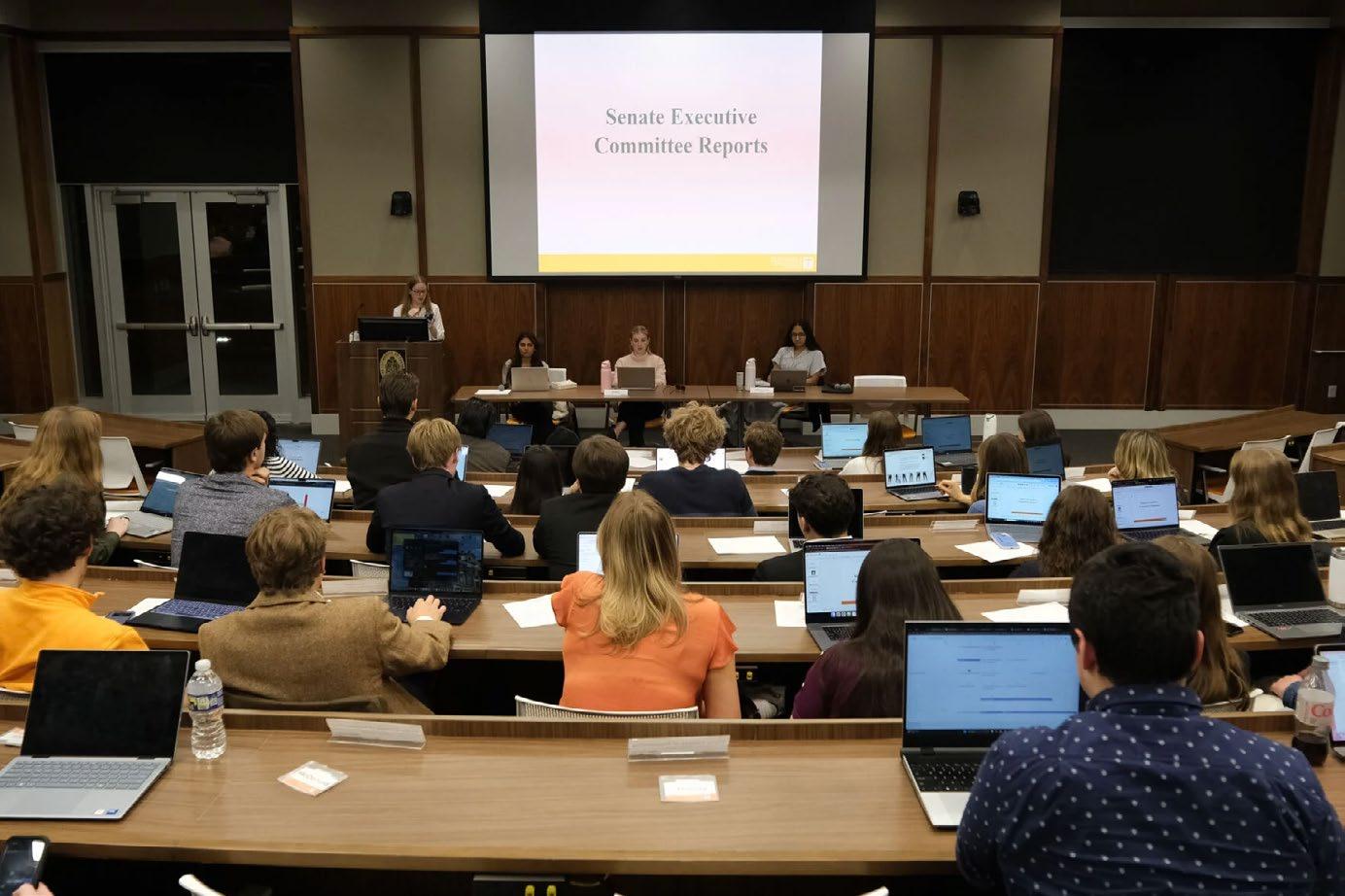
CHAPMAN WORD
Contributor
Veterans Day on Rocky Top is a poignant reminder of the Volunteer spirit of service that the university’s culture promotes. This year, the day is especially notable as Kevin Ho, a junior supply chain management student in the Haslam College of Business, was named both the State of Tennessee’s Military Friendly Veteran of the Year and the 2025 Veteran of the Year for Higher Education.
Ho believes that although the Volunteer spirit was not something that he was aware of when he first arrived on campus, it has become something that he has found great importance and connection in.
“Having now been in these positions and understand about, like our values and what our school, like characterizes as a leader, it makes sense to me. And I don’t think that’s going to go anytime soon,” Ho said.
Joining the Army in 2016, Kevin served as an infantryman in the 10th Mountain Division. Between 2017 and 2021, he was deployed to both West Africa and Afghanistan. After being discharged, he hoped that the skills he had learned during his time in service would prepare him to enter the workforce. However, after spending a couple of years bouncing around trying to find a fit, he decided to give college a try, a first for his family.
“I decided, you know, might as well use my GI Bill benefits,” he recalled.
As a result of military service, veterans are entitled to a number of benefits to help them return to civilian life.
Collectively, these benefits are referred to as the GI Bill, after the common nickname for World War II servicemen for whom the original provisions were created.
Regarding his decision to attend the University of Tennessee, Knoxville, Ho offered a reasoning that may sound familiar to many students.
“My first squad leader, we’d used to watch Tennessee football games on our first deployment together. And that was like my first taste of it, and I thought it was really cool,” Kevin said.
Only having become aware of his admittance to the university two weeks before the start of classes, he had to scramble to find housing, register for classes and get all of the other necessary boxes checked. Unlike his time in the military, he didn’t have a unit of people to support him. Fortunately, he quickly got in contact with the school’s Veteran Success Center who were able to provide much-needed help.
Ho is still involved with the Veteran Success Center through his work-study program. Additionally he is the president of the Student Veterans of America at the University of Tennessee, has served as a senator in the Student Government Association and is an active member of the Delta Kappa Epsilon fraternity.

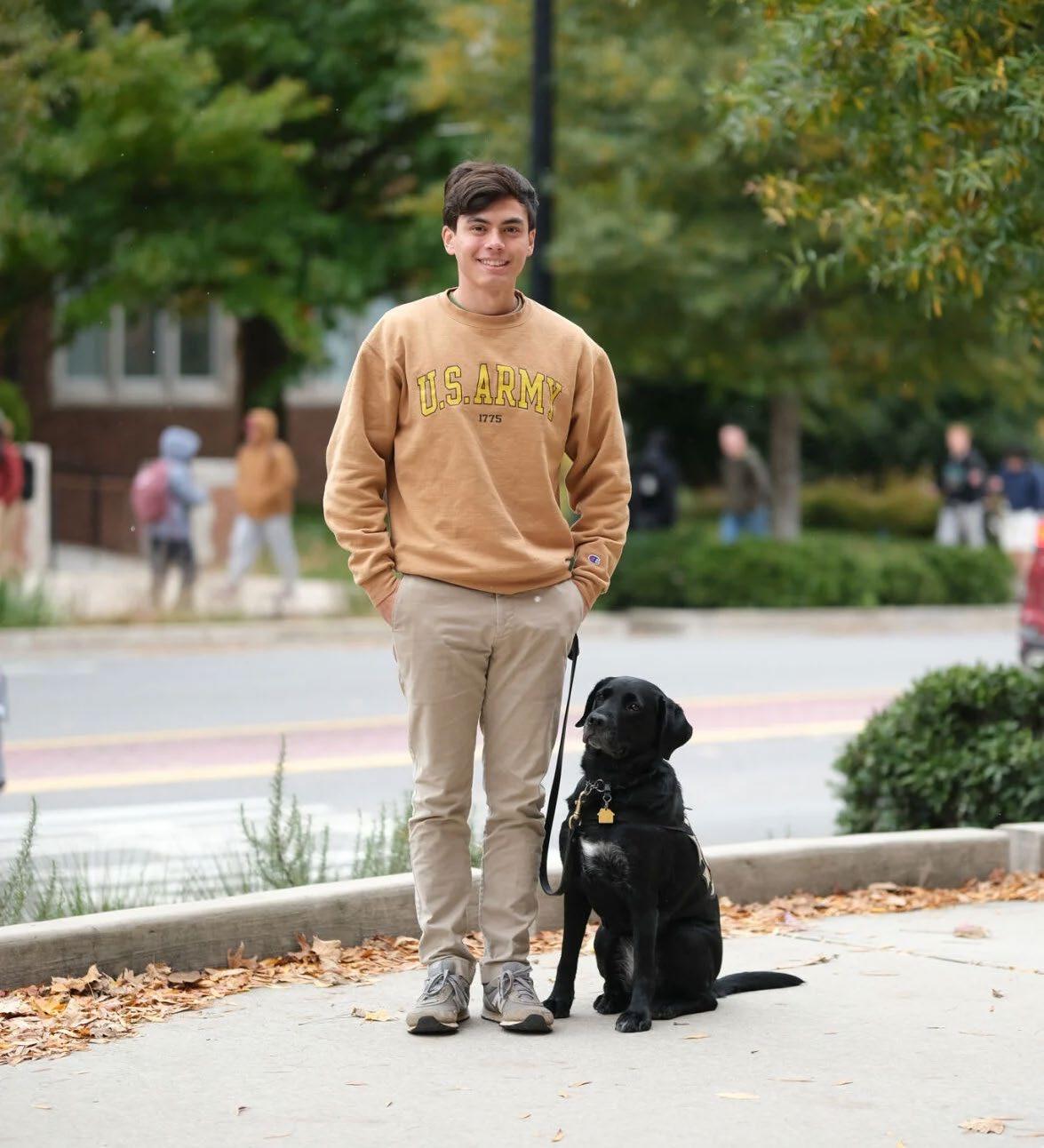
As Ho understands, the transition from the tight-knit camaraderie of military service to the more independent college lifestyle can be difficult. Despite the challenges, Kevin has found himself community on campus and has made it his goal to help other veterans in their journey.
It is because of this goal and his efforts in support of it that he was named as the Tennessee Veteran of the Year by Military Friendly. Ho first learned of his nomination while working as a wilderness awareness instructor at a camp this past summer.
While he was excited about it, he remained grounded, noting that there were many other veterans who had also done great things. This attitude slowly grew more optimistic as he learned of his advances through the rounds and the eventual reception of the awards. Overall, the experience has strengthened his resolve to continue to support other veterans.
“Help out my fellow veteran Vols here and, you know, keep advocating for my community. Just keep moving forward. Using this as a stepping stone to
continue and hopefully pursue further success empowering those around me,” Ho said.
In the case of other veterans considering college, he highlights the importance of getting engaged with the community and support networks.
“Truly, if you need any assistance or anything, along the lines of needing help or support, I recommend going to your local veteran services office. Luckily, here we have the Veteran Success Center and the VBA working together hand in hand. If you’re a veteran Vol, you, come by, come to the center, you, we got student Veterans of America, we got community, we got the support you need … Just being able to have a team can really make the difference,” Ho stated.
The ideals and motivations that Ho holds embody the ethos of what it means to be a Volunteer. His military service and commitment to supporting fellow veterans on campus exemplify the spirit of service and leadership recognized during Veterans Day observances.
PATRICK BUSCH News Editor
On Tuesday, Nov. 4, the voters of Knoxville elected Karyn Adams to represent the constituents of South Knoxville and Fort Sanders, in Knoxville’s 1st District. Adams sat down with The Beacon to discuss how her term will address the concerns of students living in Fort Sanders.
Adams, originally from Kingsport and a University of Tennessee alum, has been living in Knoxville since the early 1990s. Her interest in running for the seat has been long standing.
“I guess it was about 15 years ago the first time that someone asked me to run, and then all of a sudden, like, oh, OK, it’s not just my interest. Other people think that I could do this, too,” Adams said. Adams maintained her interest in politics the entire time, but was motivated to run for her seat when the current 1st District representative approached her.
“But then the councilman that serves in this seat right now, his name is Tommy Smith. I think he’s done an exceptionally good job in terms of really leading to bring the community together,” Adams said. “And I watched him and thought, that’s how you do it. And then he asked me to run. And I’m like, OK, I think now’s the time.”
Housing affordability, availability
Adams articulated housing affordability and availability to be a top priority of hers, particularly as it affects the student population living in Fort Sanders. When she launched her campaign, she conducted a survey of her potential constituents to understand their most pressing needs.
“I wanted to make sure that the things I thought were important were also the things the community thought were important and at the top of that list were housing affordability and homelessness, and unique to the south Knoxville part of District 1 were protecting green spaces,” Adams said.
Adams said she hopes her focus on these priorities will help make Knoxville a place where students and young residents can build their futures.
“I want you to stay here,” Adams said. “You’ve come, you come to school here, and you’ve gotten a great education, or you’re in the process of that, and I want you to see opportunity here and the viabil-
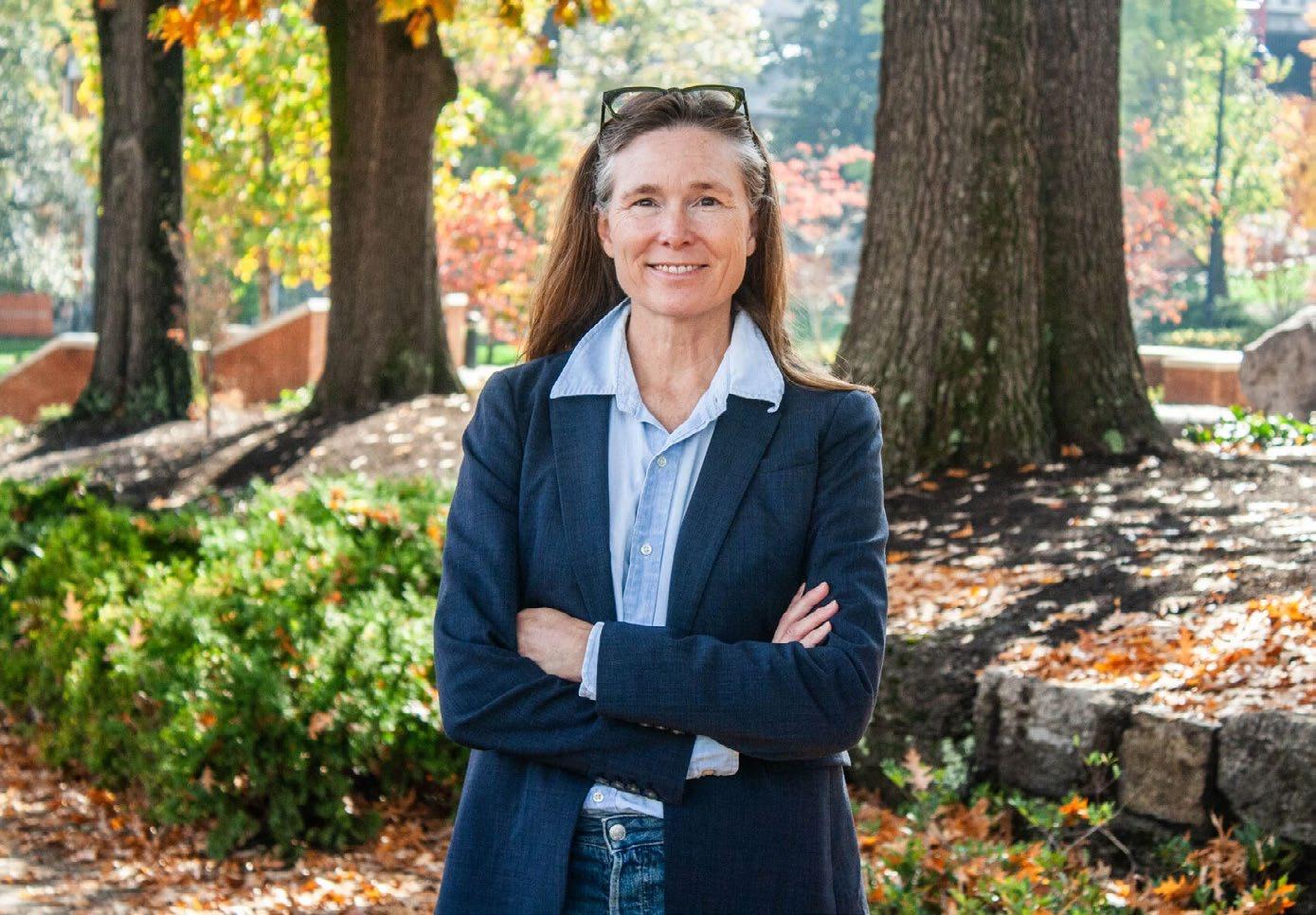
Councilwoman-elect Karyn Adams on Saturday, Nov. 8, 2025. Jayden Randolph / The Daily Beacon
ity of an affordable city you can stay in, and right now that’s really challenging.”
Adams explained that while there’s been a boom in construction of housing, achieving affordability is a different problem.
“When you talk about affordability, the planning commission has actually issued more permits, more building permits, in the last few years than ever before. But that’s a supply issue, it’s not the affordability issue,” Adams said.
Adams also denoted an emphasis on “smart sustainable growth,” growth that is small scale, think two to three stories, mixed-use and along transportation corridors.
“One of the things I want to do is start growing out opportunity zones for this mixed-use development along these corridors … make it doable, but almost templatized so we’ve solved some of the problems and the city staff that’s in charge of managing those sorts of things isn’t reinventing the wheel each time,” Adams said.
Adams discussed the use of new incentives and tools to prompt this specific form of development. She expressed that while many of the new apartments on Cumberland Avenue and in the Fort help address the supply side of the issue, keeping prices down was a different problem to wrangle.
“There are state laws that make it impossible for us to say, you know, your rent has to be kept here. So we don’t have that tool,” Adams said.
Adams talked about potentially testing
public servants to oversee the usage of funds for communal spaces, ensuring that taxpayer dollars are spent as promised, or reaching an alternative if necessary.
“(My role) if elected … is to either, A, make sure that that was spent the way that it was promised, or, B, look for other ways to fund those initiatives, because they are important infrastructure, things that the community wants,” Adams said.
There have been a multitude of concerns regarding funding infrastructure and green spaces in the city, considering that Knoxville lost a federal grant of more than $42 million after President Trump defunded the Neighborhood Access and Equity Grant Program, earlier in July.
“How do we make sure that everything that is important to us can be funded? I’ve talked about some of the affordable housing components and things that we need to keep doing, but in terms of the green spaces, one thing I want to make sure that folks know is the grant that we lost,” Adams said.
new policies and initiatives to keep prices down, such as student housing cooperatives modeled off of programs in Toronto, such as the Campus Cooperative Residence Co-Op. Those in Toronto are nonprofit, student-run residences that offer affordable, community-oriented living by allowing residents to collectively manage and maintain their housing.
Adams emphasized that the cooperative proposal is still conceptual and subject to legal approval.
Transportation, infrastructure
Adams touched on the failed half-cent tax increase referendum on Nov. 4, which would have increased city revenue by an estimated $47 million. The revenue would have been primarily spent on infrastructure improvements, affordable housing and city maintenance.
“As a candidate, I didn’t feel like it was my job to come to you and say, ‘You need to vote for this tax increase.’ I felt like it was my job to listen to you and understand what your concerns were, and if you had questions to be able to answer those with facts, then what I could commit to,” Adams said.
Adams explained the importance of empathizing with local voices in the community during the process of proposing landmark policy changes.
“This community just wasn’t ready. It’s a very uncertain economic time right now, and I get that,” Adams said.
Adams addresses the responsibility of
Student outreach Adams touched on how integral, yet often overlooked, Fort Sanders and student voices are to the 1st District in Knoxville.
“It’s the most dense part of the entire city. The university, the hospitals, the museum, like, these are huge economic drivers, and they need representation. So I need to hear from you. I’m open to all ideas that you all have about engagement. But my goal is to be present,” Adams said. Adams explained her motivation behind living in south Knoxville, and how its proximity to UT makes it a hub for new energy and ideas.
“It’s why I chose to live in south Knoxville because I wanted to stay close to the university. My husband teaches here. … I know this is a generator of ideas and innovation, and bringing new ideas through (students), so I want to support that in every way I can,” Adams said.
Adams also aims to reach the large, student-dense living spaces in Fort Sanders.
“I understand that students have unique needs that may be different from the larger district. So I would want to ask first before I come in and say, ‘this is how it’s all gonna be,’” Adams said.
Adams emphasized the importance of student perspectives and engaging with local government.
“What do you want and what do you need? What are your ideas and what are your concerns? And then start working from that,” Adams said.
The impacts of the government shutdown recently initiated by the Trump administration can be felt intensely around the greater Knoxville community as thousands find their utilities being shut off.
While the majority of front page media attention is directed towards the recent cut of SNAP benefits for the month of November, another unspoken but critical program facing shortfalls are utility and rent assistance.
With an influx of residents moving into Knoxville, housing prices have shot up, leading to a spike in the housing market that has become unaffordable for many. After Covid-19, prices in general went up for basic needs like food, gas and housing, and as a result some have struggled to find their footing again.
Misty Goodwin, the chief program officer, and soon to be chief executive officer, of Knoxville-Knox County Community Action Committee pointed out how the gaps in funding serve as detrimental issues for thousands of families.
The Community Action Committee was originally founded in 1964 as a response to a lack of assistance from the government for low income neighborhoods and communities. Since then, the committee has grown with programs like Mobile Meals, Affordable Medicine Options for Seniors and Knox Paws.
“At its core, Community Action is about neighbors helping neighbors, we connect people to resources, but just as importantly, we help them build confidence and opportunity,” Goodwin said.
Over 7,000 households in Knoxville
rely on utility and rental assistance through CAC’s Low Income Home Energy Assistance Program, but with the shutdown, there has been minimal assistance available, leaving thousands stranded unsure about what to do. LIHEAP provides assistance amounts ranging from $174-750 per month depending on the provable household burden, but with the federal freeze, there’s been no funding at all to give out.
“Our staff are seeing families who were just barely making ends meet now facing hard choices between paying for utilities, rent or groceries. These are people who are working, caring for children or seniors living on fixed incomes and the shutdown has created real uncertainty for them,” said Goodwin.
Accessibility to this program is limited beyond budget cuts, as “the state’s new online-only LIHEAP portal, managed by the Tennessee Housing Development Agency, requires applicants to have an email address and a smartphone or computer,” according to Goodwin.
For many already facing financial difficulties, requiring internet access is another hurdle to overcome in the process of obtaining assistance. It also creates a barrier with senior citizens who may not frequently use technology and are unaware how to best navigate the platform.
“In just the past few days, 34 homebound seniors have been unable to complete the online application because of mobility and technology issues … Our staff are helping people one-onone, even creating email accounts for them, but it’s a slow and intensive process,” Goodwin said.
Accessibility to a safe shelter and a warm meal is a basic human right, a
right that is now being tossed around by officials sitting in D.C. Jackson Brannon, a sophomore public affairs major, currently holds a position with Knoxville 301, a public call center sponsored by the City of Knoxville. This spot has provided him first hand experience responding to calls of need from local residents asking for direction to resources that will provide their families food, warmth, and hope.
“In the past few days our call rate has increased by about 21% exactly … When we’re answering these calls we’re often talking to people at their lowest point,” Brannon said.
Children, elderly, and community members with disabilities are typically the ones most reliant on these services, as they are the ones who struggle to access equal opportunity and maintain a stable career. Without access to funding, they face the risk of losing housing and an inability to have their basic needs met.
“We’re already seeing signs of strain: longer lines at food distributions, more people seeking rent or utility help, and seniors choosing between medication and energy costs. These are not abstract numbers — these are our neighbors,” Goodwin said.
The growing need for assistance is outpacing the capacity of many local programs.
“To try and address the concerns of callers in a dignified way … and that’s hard to do when the majority of things we’re trying to send them to are having funding struggles themselves… or that a lot of them are already at capacity,” Brannon said.
The current non-profits in place, such as Ladies of Charity and Volunteer Ministries are facing trou-
bles with their funding, as many have already run out of funding without additional help from the federal government. For those that still have money to give out, it’s extremely limited and the application to get help is difficult.
“I think we’re going to be out of funding next week if the shutdown is not resolved,” Brannon said.
It’s difficult to reach out and ask for help in the first place, but even more difficult when the sources supposed to be able to offer help have already run out of resources.
But this issue goes beyond the general Knoxville community, it can be found here at the University of Tennessee.
“The numbers don’t really lie, if you have 36,000 students in Knox County, you know a student who uses an EBT card,” Brannon said.
The pause in benefits is raising concerns about how it could affect students’ stability, including their housing and access to education.
“I think this crisis brought out a lot more things that we need to re-evaluate … We need to start understanding we’re dealing with people’s lives here. We need to start asking ourselves, are we gonna address the problem where it is?” Brannon said.
Despite the uncertainty of when the shutdown will end and funding will resume, the community continues to show support to its members.
“If the shutdown continues, we risk seeing even greater hardship in the weeks ahead. But what gives me hope is how our community always shows up, through donations, volunteerism, advocacy, and compassion,” Goodwin said.
down by more than 60% of voters.
Contributor
Knoxville voters on Tuesday soundly rejected Mayor Indya Kincannon’s proposed half-cent increase in sales tax, which would raise the city’s rate to 9.75%. The measure, aimed at raising nearly $47 million in annual revenue for affordable housing and improvements to neighborhoods and parks, was turned
The rejection of the referendum means the sales tax rate remains at 9.25%, and the proposed projects by Kincannon will not progress forward.
Also on the ballot were five open seats on the Knoxville City Council. Voter turnout was relatively high, with nearly 25,000 total ballots cast. Each of the victors won by comfortable margins.
District 1 District 2 District 3
Karyn Adams: 1,933 votes
Nathan Honeycutt: 3,662 votes
Doug Lloyd: 2,147 votes
District 4 District 6
Matthew DeBardelaben: 3,530 votes
Denzel Grant: 1,685 votes
PATRICK BUSCH News Editor
Voters’ rejection of Mayor Indya Kincannon’s proposed sales tax increase on Tuesday, Nov. 4, marked the most recent of speed bumps to her agenda. The proposal lost by a wide margin, being turned down by more than 60% of voters. This major public rebuke of Kincannon’s flagship fiscal initiative highlights what’s been increasing friction between the mayor, the city council and voters.
In May, Kincannon began touting the proposed half cent tax increase, money which would’ve primarily been spent on infrastructure improvements, affordable housing and city maintenance. Kincannon faced scrutiny from Knoxville republican officials, who advocated instead for cutting government spending and waste.
The tax was part of a plan to speed up city works projects and help alleviate pressure from stagnating sales taxes. Kincannon had framed the increase as an essential part of her fiscal plan that would be primarily burdened by tourists in the most dense portions of Knoxville.
The failure of the proposal begs the question: How will the city accomplish the projects it no longer has the funding for?
Back in January, tensions flared over handling and funding of certain public safety programs. Violence intervention group Turn Up Knox sparred with Kincannon’s administration over the city’s complaints of poor leadership and little insight.
Turn Up Knox Executive Director Denzel Grant described a lack of support from the city. Kincannon spokesperson Kristin Farley spoke to Knox News, stating that Turn Up
Knox had not met its contractual obligation to provide monthly financial statements outlining its use of public funds.
The following month, the city terminated its contract with Turn Up Knox, citing communication issues and a failure to abide by the terms of the contract for termination.
Turn Up Knox Executive Director Denzel Grant stepped down Aug. 31 to focus on his ultimately successful run for the council seat representing Knoxville’s 6th District.
Also in January, a city council meeting spilled into a debate about surveillance concerns and policy accountability.
The Knoxville city council ultimately approved a $27.5 million contract with Axon Enterprise that extended existing services and expanded the number of cameras in the city.
Councilwoman Amelia Parker led a group of attendees protesting the use

of surveillance cameras in the city. The council voted 7-2 in favor of the Axon contract.
Kincannon also faced pushback earlier this year surrounding the proposed sale of Chilhowee Park to turn it into a community complex. After facing intense public scrutiny, in September the city council withdrew the vote for a proposed sale.
Kincannon expressed disappointment with the council’s move, but acknowledged a flawed public engagement process.
As Kincannon works to regroup after a string of public and legislative s etbacks, her ability to rebuild trust and cooperation with the city council could determine the course of the remainder of her term.

SAMANTHA WHITLEY Mental Health Reporter
For Liam Hoskinson, ADHD feels like being stuck behind a wall.
“There are a lot of days where the only thing between me and dropping out of college is spite, but that has to be enough and it’s gotten me this far,” the junior mechanical engineering major said.
“ADHD sucks sometimes. … Everyone asks why you don’t just phase through the wall like a normal person.”
Hoskinson has ADHD and was diagnosed at age 14. According to him and his family, he “talked too much.”
“I just had an overactive imagination,” Hoskinson said. “I tuned out of conversations or classes … and couldn’t wait my turn in conversations and was always moving. I wasn’t forgetful, I just didn’t want to do my responsibilities.”
ADHD is a common diagnosis for college students.
Jessi Gold, psychiatrist and UT Chief Wellness officer, said that among her experiences working with different colleges, ADHD has been the third most common diagnosis, following anxiety and depression.
Before students with ADHD enter college, they might exhibit symptoms that go unrecognized. Before college, some students may have had their parents reminding them to complete assignments, whereas they are now forced to complete them on their own, according to Gold.
Hoskinson never got support as a kid or underwent analysis for symptoms since he had good academic standing at school. During a memory test, he was asked to repeat five words shortly after they were said out loud, and he passed.
“(The test) never flagged me, I guess because I spent all of the intervening minutes repeating the words in my head over and over again,” Hoskinson said.
Healthy Minds Study concluded that although the number of students with ADHD is increasing, only one in three college students with ADHD registered for accommodations.
Hoskinson reflects the small percentage of college students who are registered for accommodations. He receives extended time for testing, and he tests in a different location than his classmates, offering him a quieter environment to ease anxiety.
“The extended time has been a genuine lifesaver,” Hoskinson said. “Before I had it, I ran out of time on most tests I took, and if I didn’t run out of time, I spent half the test rushing to get it done in
time and therefore made mistakes. Having extra time on tests lets me take my time to read questions thoroughly … and think through all of the questions rather than just guessing because I’m scared I’ll run out of time.”
Gold said that one way to reduce the stigma surrounding ADHD testing accommodations is to think of it as a person who needs glasses to take a test — no one would think twice if the person got glasses for the test. After all, it would help them read better.
It is the same for ADHD, recapturing the idea that mental health issues should be perceived the same as physical health issues, Gold said.
Testing accommodations are not creating an unfair advantage, Gold said. “It’s simply normalizing your experience by giving you the accommodation to finish.”
“I think some of that comes from this belief that people are asking for accommodations (like extra time) who don’t need them, and in my experience that really isn’t true,” Gold said. “There’s a lot of hoops that people have to go through in order to get extra time, either showing documentation from stuff from high school or current testing or from a doctor right now, and if people go through all of that, usually they need it.”
There are three different types of ADHD — hyperactive, inattentive and a combined presentation.
College students with hyperactive ADHD might persistently fidget, have trouble sitting still and struggle not to interrupt people when they’re talking because their brain is moving faster than others’ and does not wait for the response.
Inattentive ADHD can mean the student has trouble focusing and concentrating but also makes careless mistakes — forgetting to turn an assignment in, struggling to manage their time and losing items, according to Gold.
As Hoskinson has a combined type of ADHD, he experiences a blend of inattentive and hyperactive, which he said is challenging to manage.
“It can often be perceived as laziness,” Hoskinson said.
“A metaphor that I’ve seen for executive dysfunction (a major symptom of ADHD) is to imagine trying to put your hand on a hot stove. There is a wall in your brain that stops you, you physically can’t burn yourself,” Hoskinson said. “Unfortunately, my brain has no sense of where to apply the hot stove instinct, meaning that some days I have trouble showering, eating, getting out of bed, going to bed, or even fixing something that is causing me

Graphic by Renee Allen
active discomfort.”
A student balancing college with ADHD can be difficult but UT has a plethora of resources according to a university statement provided by Lisa Leko, communications manager within the Office of Communications and Marketing.
“The Student Counseling Center offers a therapy group for ADHD support and skills development and when appropriate, individual therapy may be available for ADHD or academic distress. Services provided at the Student Counseling Center are included in student fees, and there is no additional cost to students.
“Student Disability Services has a list of accommodations and services on its website. Students can also request accommodations through the forms page on SDS’ website.
“Students with a previously documented ADHD diagnosis are eligible for treatment with medication through the Student Health Center Psychiatry Clinic.”
For students who have not had prior psychological assessment or testing for ADHD, the Korn Learning, Assessment and Social Skills Center at UT works to support students who struggle academically and need more learning techniques.
“We use evidence-based interventions geared to help students with ADHD and other executive functioning challenges, and the doctoral students, doctoral interns and psychologists are all well-versed in these types of applied behavioral interventions,” Brian Wilhoit, licensed psychologist and director
of KLASS, said.
While UT offers a range of ADHD resources, Hoskinson said that professors could implement more strategies for students struggling with learning disabilities, such as posting their lecture notes online or distributing resources about how to effectively study.
“Not having notes can really screw over disabled students who have to miss class due to symptoms but can in no way afford to go to the doctor every time they have a flare-up,” Hoskinson said. “It feels very invasive to have to keep a professor updated on the state of my chronic health issues in order to get the notes I need to learn. Having health issues should not exclude me from getting an education.”
For those who are diagnosed with ADHD and are preparing for college, Hoskinson has some advice.
He urges students who are on medication for ADHD to make an appointment with their prescriber in advance for any needed dosage adjustments. Hoskinson also recommended registering for testing accommodations, developing an accountability network and learning study techniques that work for you as an individual.
“Improving the academic landscape for people with ADHD will help other disabled people and plenty of non-disabled people. We deserve equity and a chance to build a future for ourselves and no matter how much it seems like the world isn’t meant for us, we, by nature of being human, have a right to exist in society,” Hoskinson said.
GIA SCHEELS Contributor
If you have ever driven by a breathtaking painting on The Rock and wondered, ‘Who painted that?’ Chances are it was Chloe Peterson, a senior at the University of Tennessee.
Peterson initially started painting in high school during the COVID-19 pan demic, with her first project being her bedroom walls.
Peterson spends her free time shar ing her creativity and artistry with her community.
“My parents were like, ‘Let’s just go paint your room,’ and then I did, and my parents realized I had a knack for it,” Peterson said.
Her high school quickly recognized her talent, and she was able to create some pieces for it. By the time she came to UT, she knew she wanted to paint The Rock at least once.
What started as a one-time event turned into an entire football season, and now Peterson has painted The Rock more than 25 times.
“It was one of those things where at first it was a hobby and then it became a work experience,” Peterson said.
Although she owns her own business as a mural artist, Peterson is actually a kinesiology major and plans to attend school for occupational therapy.
“I realized I didn’t want to do it fulltime for the rest of my life,” Peterson said. “I don’t want to look back on things and regret it, so I decided to keep it as a hobby.”
Peterson gets paid for some of her work through partnerships and was awarded a service scholarship from the Howard H. Baker Jr. School of Public Policy and Public Affairs.
Her most recent mural was for the Baker School, commemorating what would have been the late Sen. Baker’s 100th birthday. She chose green, white and yellow to match Baker’s campaign colors from when he ran more than 60 years ago.
Sometimes clients request specific images and text, while other times Peterson has complete creative direction. She used to hand-paint her murals but now uses spray paint to save time and resources.
Peterson said her design process can take anywhere from a few minutes to a
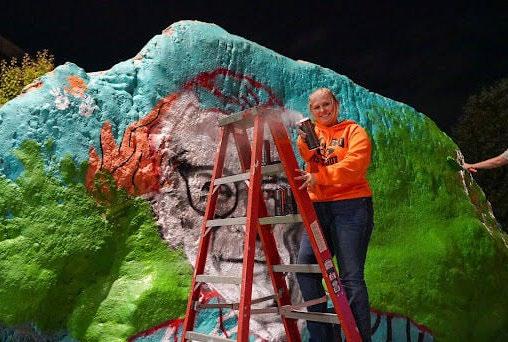
couple of weeks. She draws inspiration from asking herself what she thinks her fellow students would like to see.
You may recall seeing the mural of Davy Crockett’s skeleton standing in front of a barren sunset-orange forest over Halloween weekend. This was Peterson’s work to celebrate the rare event of a dark-mode night game occuring the day after Halloween.
“I was like, Smokey? Did that. Football player? Did that. Let’s put Davy Crockett on there,” Peterson said. “I try to stick to a school-themed idea, or at least do something that’s been asked of me.”
After she comes up with her ideas, the painting itself can take up to a couple of days.
Peterson said she doesn’t have a favorite mural she’s ever created, but said that the Davy Crockett skeleton has been her most impressive.
“I think that my most eventful times
have always been challenging games,” said Peterson.
For the Alabama vs. Tennessee game last year, Peterson did a split-face mural for SEC Nation that included Smokey and Alabama’s mascot, Big Al. She said that people were upset and didn’t appreciate that she included an opponent’s mascot.
Peterson said that although it was one of her favorite pieces due to its complex imagery, she still ended up revising it to address what people didn’t like.
“I was like, I just spent 10 hours working on that, but The Rock is a free space,” Peterson said. “So you know what? I just went back and fixed it.”
Although Peterson is graduating in December, she said she will come back to paint on special occasions if asked.
“I mean, this is coming from someone who is the third girl to take this on,” Peterson said, referring to Peyton Miller and Kate Huffman, who each led
the tradition of gameday mural painting during their own times on campus. Peterson hopes that someone will come along to continue it after her as well.
“I hope somebody picks up the torch and says, ‘you know what, The Rock does need to look good for football games,’” Peterson said.
With a couple of cans of spray paint and the support of a loving community behind her, Peterson has made a lasting impact on campus. She continues to inspire gameday spirit, promote unity and celebrate UT’s history through her creative work.
“The Lord gave me a rock to stand in front of, and to support myself,” Peterson said. “Not only that, he gave me a community that is surrounding this rock, and that is something that resonates with me strongly.”
You can find more of Peterson’s work on her Instagram page or through her website.
Margie E. Burke
1 Entry permit 5 Ming things
Comic-strip possum
Border upon
Insect stage
"Argo" setting
Faction
Disguise
Doesn't include
Orchestral section
23 Recruiter's objective 26 Solomon's strength
28 In truth
32 Atlas enlargement
33 Narnia's creator
34 Fish delicacy
35 Lumber along
36 "Bet you can't!" taunter
37 Twelve Oaks 61 Brings into play 12 Smitten
Far-off place, neighbor 13 Snake eyes figuratively
38 Bud holder? DOWN 19 Parking penalties
39 ____ City: 1 Hyacinth holder 21 Novel idea
Nickel or steel
Rope fiber Detroit nickname 2 Mountain goat 24 Dwayne
Concert
40 Busy places 3 Those who Johnson, memento
41 Not localized, as follow familiarly
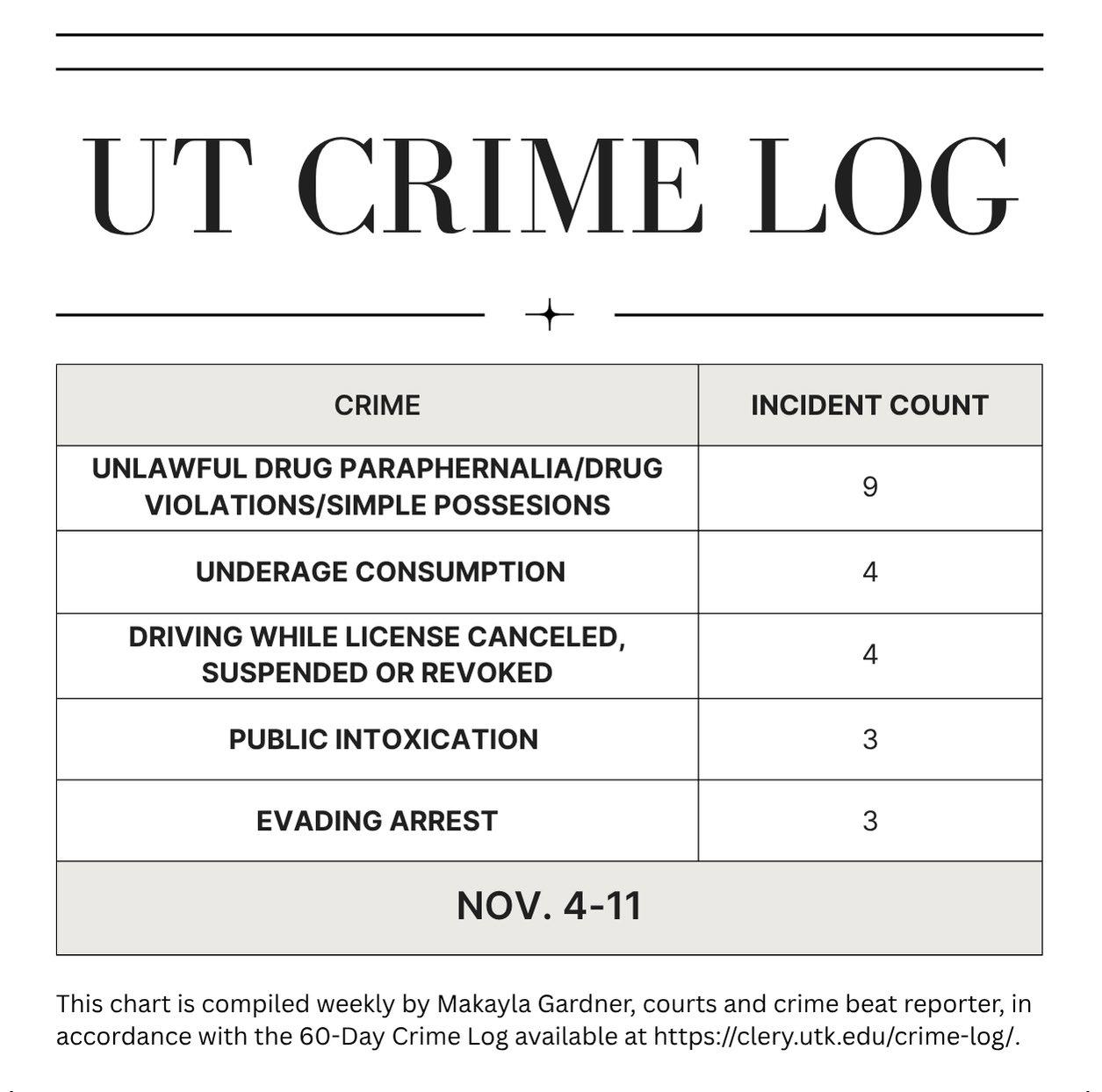
Rising stars a problem 4 Showed up for 25 Yard machine
43 Patio material 5 "Law & Order" 26 Diaper bag
44 Smelly pranks extra, maybe supply
46 Fillion or Lane 6 Accumulate 27 Mosaic
49 Attributed 7 Elliott or Neill technique
52 Thrill 8 Freudian topic 29 Ludicrous
55 Drug bust qty. 9 Tourist shop distortions
Dog to avoid
Trawling items
Skater's jump
Bangkok native
If all ___ fails...
Specks
Camping gear
56 Salty drop offering 30 Sophia of "Two chain
57 Emphatic refusal 10 Southwest Women"
58 Lab procedure workers 31 Baker's need
59 List anagram 11 Spoon- 33 Classical tongue
60 Levels administered 36 Like some traits





Caesar's hello
Solution to Crossword:
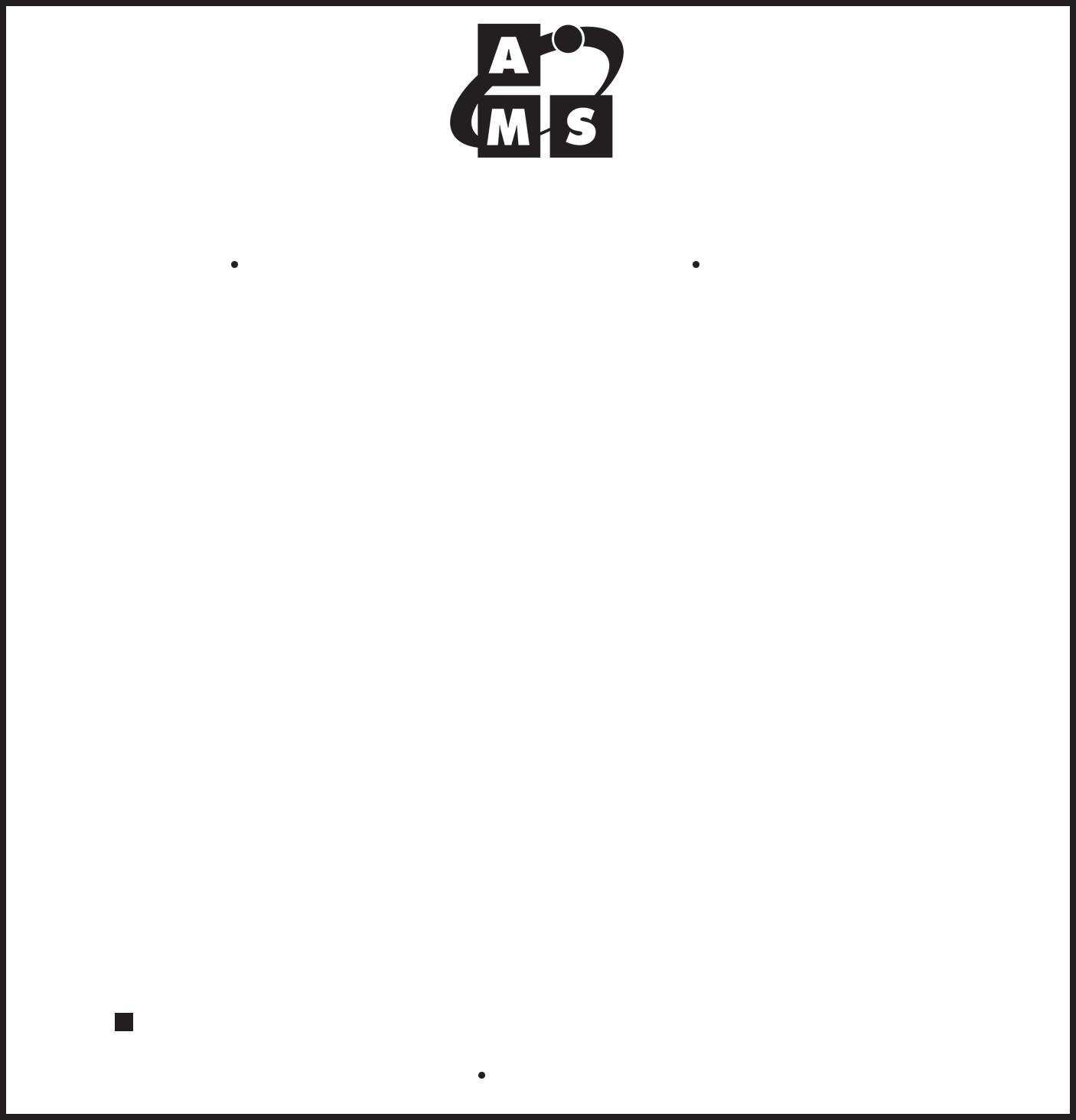



















JERRY SAGUIN Contributor
Clouds of incense fill the air with the hopes and wishes of New Year’s celebrants. Colorfully dressed crowds bustle around the imposing Kaminarimon, or “Thunder Gate,” the entrance to a Buddhist temple in Tokyo, excited for the possibilities of a new year.
Ethan Garnier sees the shot he wants — an older man briefly turning to face his lens — and captures a winning image. Garnier’s and other students’ photography currently features alongside some of Baker’s photographs of Japan at the Knoxville Museum of Art, where they are being displayed together until Dec. 14 as part of the Howard Baker Photography Exhibit. The Howard H. Baker Jr. School of Public Policy and Public Affairs hosted the contest and exhibition as part of its celebration of what would be Baker’s 100th birthday.
Eleven students in total won the Howard H. Baker Jr. School of Public Policy and Public Affairs’ Howard Baker “Life Through the Lens” Student Photography Contest. Those students are:
* Gwen Aguilar, a senior studio art major
* Blaine Atkins, a junior management major
* Evely Baker, a senior art major
* Jed Baso, a sophomore finance major
* Lilian Renee Call, a senior studio art major
* Ethan Garnier, a junior biological sciences major
* Miles Alan Lineberger, a sophomore business management major
* Jen Martinex Mendez, a senior geography major
* Robert Campbell Row, a senior cinema studies major
* Ava Sabatini, a junior ecology and evolutionary biology major
* Venetia Zhu, a graduate student studying fine arts
Faculty judges from the University of Tennessee School of Art selected the winning images, and each student photographer was awarded $200.
Garnier said he was ecstatic to learn he was selected in the contest.
“Seeing like, holy crap, one of my pictures got selected, it was a really cool feeling,” Garnier said.
Garnier said part of what drew him to take his winning picture was his love of people. He remembered the massive crowd
of people that January day, their lively mood and their interesting outfits. He was eager to get a picture of the spectacle when an older man wandered into the center of his frame.
Garnier said he wasn’t sure why he submitted that photo specifically, but he had no clue that the Baker exhibition would highlight a collection from the senator’s U.S. ambassadorship to Japan.
Garnier expressed gratitude for being able to attend the exhibition’s opening night.
“I’m just really grateful for the opportunity to have been there,” Garnier said. “Going to the opening night reception, I actually knew a lot of photographers who were there and I got to meet people.”
Garnier said he felt humbled for the opportunity to connect with other photographers and see his work on the wall next to Baker’s and the other student winners.
“I have a lot of work to go, a lot of work to do, a long way to go,” Garnier said.
Miles Lineberger, another contest winner, submitted a photo from his time interning for a sports media organization over the summer. While Lineberger said he enjoys the constant movement of soccer photography and being able to anticipate the action, he was drawn to submit a photograph he took pregame at a Charlotte FC match.
“I was up in the concourse on the upper deck of Bank of America stadium, and I looked over and these guys were sitting there, they were the only two people in the section and they were enjoying their food and their drinks before the game … and I just really thought it showed a lot of community for the game,” Lineberger said.
Lineberger said he appreciated the chance to showcase his work at the exhibit and hopes that he can leverage the exhibit into future opportunities.
“One of my goals was to work with Charlotte FC next summer on their media team,” Lineberger said. “I think that having something like this to talk about in an interview, show that I’ve shot Charlotte FC before, and this is what I did and this is how I was recognized, I think that’s a super important talking point for something like that.”
Lineberger, like Garnier, said he was grateful for the chance to see his work in a museum, especially early in his career.
“That’s a pretty rare experience for anyone,” Lineberger said.
Lili Call, a third contest winner, emphasized how her photo being selected was an especially validating experience for her because of being showcased next to a re-
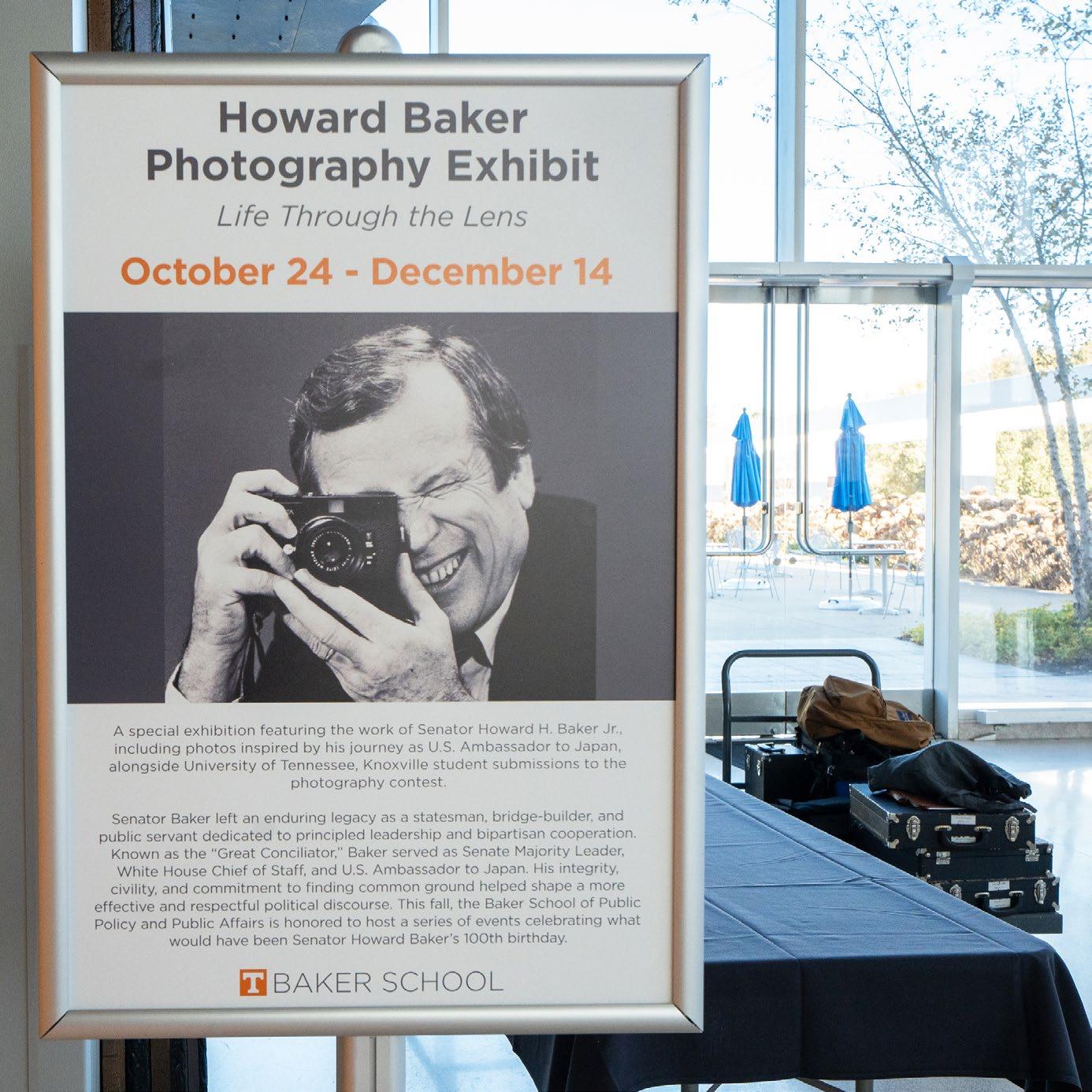
nowned UT alum.
Her photo depicts her partner’s bare shoulder as he’s lying in bed, cast in early morning glow.
“I’m just trying to capture that idea of when you first wake up, and you’re next to somebody, and the intimacy of that moment without having to be anything else,” Call said.
Many of Baker’s pictures displayed in the exhibition focus on people. Call said there are two ways to take pictures of a foreign culture.
“You can do it to where you’re on the outside looking in,” Call said. “or you can submerge yourself in the culture and the people and you can take pictures of them in a more intimate or respectful way, and I feel like that’s what Howard Baker does.”
Call said she takes pictures of people in a similar way to Baker.
“I feel like the pictures I take of my partner are like, ‘I’m there,’ and I’m not taking pictures of him in an observer kind of way. I’m in the moment too,” Call said. “I think that we’re similar in that way.”
Baker, who graduated from the University of Tennessee College of Law in 1949, served in many positions — he was a Navy man, a three-term Tennessee senator and
a political diplomat, among other roles. In his free time, he was an accomplished photographer, which the Baker School sought to highlight through this exhibit.
Bruce Cole, assistant professor of practice in the School of Art, once worked at a now-defunct photography store in Knoxville that Baker visited frequently. He remembered Baker’s strong presence every time he came to the store.
“He was not a terribly big man, but the way he carried himself established a pretty amazing presence that I think probably only comes if you’re a senior statesperson,” Cole said.
Cole said that Baker’s photography covered a variety of interests, from birds to day-to-day life as a government figure. His photography was emblematic of how Baker lived his life, according to Cole.
“If you look at his work, he was curious about everything, and I think that’s exactly the kind of quality that it takes to achieve the political positions that he was able to gain over the years,” Cole said. “He was obviously a very intelligent man, but he was also, as most politicians are, a very emotionally intelligent man, and I think that comes through in his photography.”
GIA SCHEELS
Contributor
Yassin’s Falafel House opened over 10 years ago in 2014 with a man and an American dream. What started as simply preparing food for events and churches turned into a family-owned, community-cherished Mediterranean restaurant.
Yassin Terou came to America as a Syrian refugee at the end of 2010 during the severe internal turmoil that Syria was experiencing. Yassin said he never planned on staying in America, but the worsening relations of the Syrian government and its people left him no choice.
“When I (decided to) stay here, it opened my eyes to the land of the American dream, and I knew I should do something to change my life and do something to connect to the community,” Terou said.
Terou used this newfound determination to help the community by serving food at churches and events. He began to love the environment around him and started to dream of a bigger way he could make a change.
Ten years later, Yassin’s Falafel House is one of the most loved restaurants in Knoxville. Yassin attributes this success to his community, which first gave him hope when it all began.
“I think the success comes from acting like
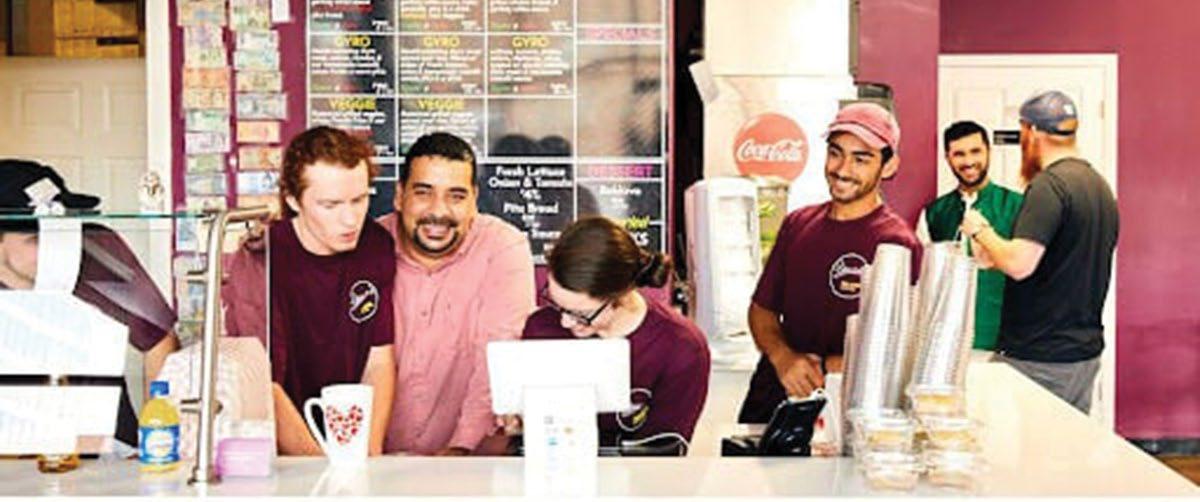
one family,” Terou said. “We were together (through) every inch, good and bad things.”
Yassin’s has always been about more than just the food, though. It’s a relationship between customer and business that was built on trust and passion.
In April 2021, Terou was presented with the CCI Diversity Award by the University of Tennessee College of Communication and Information. The award recognized his contributions to the diversity and welfare of Knoxville.
“That relationship, that social impact and working together — that’s what makes our restaurant not just a restaurant,” said Terou. “It’s just a place where you can come and feel safe and feel loved.”
It’s not just the restaurant that is loved, Terou himself has maintained relationships within the community since he first opened.
One of his favorite aspects of owning a restaurant is being able to help where he can and seeing people grow over the years.
“Just seeing people in our restaurant or seeing someone walking on a street and saying ‘hi,’ just talking to them,” Terou said. “Building that bridge and making the seed of love is what makes me really happy.”
Through nurturing this community, Terou found himself gaining a relationship with the students and campus life here at UT.
Yassin’s Falafel House often gets involved in student life by not only providing a safe place to gather but also through sponsorships
and events.
“We do sponsor a lot of events for students. … They are like our kids, our brothers and sisters,” Terou said. “For us, we all love the Volunteer spirit, (and) we do a lot of partnerships with that.”
Students show up for Terou just as he has shown up for them. Even while the restaurant is temporarily located downtown due to construction, students often meet to enjoy the delicious food and a welcoming place to gather.
“I would definitely recommend it, there are a lot of things I really like about it,” Gina Isber, a senior at UT said. “Obviously, the food, but not just that, the atmosphere is very welcoming.”
Yassin’s was featured on ABC News and USA Today after being named the ‘Nicest Place in America’ on Good Morning America in 2018.
“Their restaurant has amazing quality food and they use fresh ingredients,” said Isber.
“I personally always get their Shawarma chicken plates, and it is always incredible.”
“The (strongest) thing we did was being a family, and being there for the students as the students are there for us,” Terou said.
“That’s what makes us a place for them … (to) feel good to be at.”
If you haven’t tried Yassin’s Falafel House, it might be time to add a new favorite to your list. Terou said that if anyone has never had falafel, they need to try it at least once.
well tolerated because we use much lower doses than humans receiving chemotherapy.
During retired mascot Smokey X’s biannual checkup on Oct. 15, veterinarians from the University of Tennessee College of Veterinary Medicine noticed a mass on the kidney.
“Diagnostic sampling of the mass revealed it was a renal carcinoma,” UTCVM said in a statement.
Carcinoma is a form of kidney cancer.
Now, almost a month after the initial diagnosis, Smokey X’s veterinary team discussed treatment and their approach to caring for UT’s beloved mascot.
“Aside from slowing down a bit — something that was attributed to his advancing age and osteoarthritis — he hadn’t shown any significant changes out of the ordinary for a senior large breed dog … This kidney mass was found incidentally during screening, which fortunately allowed us to identify and address it before any clinical signs of disease appeared,” Clinical Professor Zenithson Ng said.
Various treatments are being discussed, including nonsteroidal anti-inflammatory drugs and a form of chemotherapy to preserve his quality of life through treatments.
“Chemotherapy in dogs is typically very
… The main risks are decreased appetite, vomiting, diarrhea, low white blood cells, high blood pressure and protein loss in the urine,” Assistant Professor of Veterinary Medical Oncology Andrew Schlueter said.
Luckily, Smokey X is feeling no pain from any treatment or mass, and can still live his normal life as a true Volunteer legend. He resides with the Hudson family, who have owned every version of Smokey since Blue Smokey, UT’s first live mascot.
“Smokey X is doing well to be an almost 14-year-old boy! We are still in shock about his diagnosis, but we are extremely grateful to the UT Vet School for their amazing care of our precious Tennie! Minus age-related issues, his diet and mannerisms, etc., have remained unchanged, and for that, we are also very thankful,” the Hudson family said in a statement.
Smokey’s recovery is an ongoing process, and UTCVM is working to provide treatment through a collaboration across all services. This ensures that Smokey’s recovery is guided by love, comfort and dignity.
“Honestly, we approach Smokey’s care with the same compassion and commitment we give to every beloved pet we see. While his
role as a public figure makes him special to many, our sole focus remains his individual well-being and quality of life. Our responsibility is to ensure he receives the best possible care that aligns with his family’s needs,” Ng said.
As Smokey’s veterinary team works to provide the best care possible, they also ask for
respect and privacy as he goes through the recovery process.
“Let this also serve as a gentle reminder to cherish and appreciate your own pets — enjoy every moment, keep up with preventive care, and stay attentive to their health and wellbeing, especially as they advance in their senior years,” Ng said.

CLAIRE THATCHER Contributor
On the border of Crossville, Tennessee, driving into Monterey, a billboard stands tall on the side of the interstate. A picture of a man in his mid-50s sits on the right-hand side. He flashes a 100-watt smile, overlooking passing cars through thin-rimmed glasses. His tie is straight. His polo is powder blue. Emblazoned on the left-hand side is the name “Cameron Sexton.” Underneath his picture, the billboard proudly declares that it’s “The home of Tennessee’s most conservative legislature!” A quick Google search will tell you that Cameron Sexton is Tennessee’s House speaker.
I pass this billboard every time I head to Nashville on the weekends. I have come to expect Sexton’s familiar smile as I drive through Crossville.
What struck me was his tagline: “Home of Tennessee’s most conservative legislature.” While probably written to make its reader feel a sense of contentment, meant to comfort voters with its commitment to maintaining homogeneity, it had a different effect on me. I turned to my roommate and asked, “Is that really something he thinks is a flex?”
Why aren’t we aspiring to be Tennessee’s most ideologically diverse legislature? Or Tennessee’s most open-minded, academically grounded legislature? While maybe it’s because Tennessee is far from the nation’s most ideologically diverse legislature, it’s worth noting political uniformity is being pushed, no — bragged — about.
This isn’t a new concept. The basis of political advertisement is grounded in what elicits a response. Villainize your opponent with devil ears and laser eyes, and jump cut to a picture of you in a retirement community petting a puppy — you embody Christian values, and the other guy got a DUI in 2009. All Sexton is doing is pandering to his audience. He knows that the people driving down the I-40 are a majority of right-leaning voters, consistent with the Republican majority in the Tennessee House of Representatives. It won’t be hard to affirm their beliefs and snatch their vote with some subtly divisive political advertising. Compromise is cast aside, and this red state just got redder. Sexton’s blue polo shirt speaks volumes — he is the ultimate family man.
I must acknowledge that I strongly believe that what the people want, they should get. If Knoxville declared tomorrow that they wanted to be Tennessee’s most conservative legislature, buy me a gun and a pack of ZYNs because I believe in the democratic model of government.
But is that really what most people want? In 2025, there is no shortage of people on extreme ends of the spectrum — the most

conservative or most liberal. The loudest voices, the most viral content and the most covered opinions. Everyone wants to watch a 20-something white supremacist brazenly spew hate speech on Twitch — it’s entertaining. It’s addictive in its depressiveness. It elicits a reaction. The comments and reposts land a 30-second clip on Fox News, convincing impressionable viewers that this is what the world has come to. Nobody wants to watch a completely normal person, without any polarizing opinions, talk about their passion for uniting two incredibly divided political parties.
When you compromise, each side loses at least a little bit. And the high-powered politicians in each party won’t be caught dead losing — even if it comes at the expense of the political climate of America. If you ask me, obtaining money and power is a lot easier when you sacrifice the best interests of others and prioritize your own.
So even if most Americans aren’t hardright Twitch streamers, that’s the majority of political content that is broadcast. Getting
people fired up, getting their fingers moving — that’s more profitable than platforming people that aren’t going to make either side exceedingly passionate. Politicians embrace the majority — feed off the enthusiasm, anger and passion of people that won’t budge, convincing the rest of the world that it’s composed of people just like them.
It’s not about where you fall politically. It’s not personal, Cameron Sexton. Regardless of where you land, we are all capable of building echo chambers. Are you advertising community and customer satisfaction, or are you flaunting conformity and polarization?
Are you a red-blooded Confederate at heart, the blood of your ancestors flowing through your veins, or are you a 6-year-old that won’t give up your iPad without screaming in the middle of a Chili’s? Maybe it’s not the flex you think it is.
Hey, I could do one for the liberals, too. Like I said, I’m Swiss, baby.
There’s an analogy — the political spectrum is shaped like a horseshoe. We all start at the top and drift farther apart until we are at
opposite ends — two different political parties. But the more extreme each side gets, the farther they go around the bend, the more they curve towards each other.
This theory reinforces the idea that often, we are more alike than we think. Similarities transcend contrasting beliefs. The extreme is ideologically pointless when the goal is to vilify the other side.
So there really is no point in doing anything but trying to come together. Why isn’t the goal to understand each other? When did this become about winning? Political elections — I guess … but democracy? No. There has to be more to it than that.
I’m sure the thought has crossed many of our minds — if only we could change those small things about ourselves that we don’t like. Whether it’s bigger lips, tanned skin or a different nose, we think that the slight shift could give us that extra confidence boost we need.
Well, today we have that option. Fillers, Botox, tanning beds and plastic surgery exist to change just about anything you don’t like about yourself. Many college students utilize these things to change their appearance but often don’t consider the long-term effects they could have on their health.
Perhaps the most widespread and accessible form of body modification for young adults are tanning beds. Salons, gyms and even some apartments offer tanning beds as amenities, and you can often get memberships to encourage regular use.
I don’t want to repeat the obvious — we all know they cause skin cancer. I want to focus more on the health differences between skin damage from a tanning bed compared to getting a tan in the sun.
According to UnityPoint Health, tanning beds emit 12 times more UVA radiation than the sun. UVA radiation is the type of energy emitted from the sun that can deeply penetrate the skin and cause skin cancer and increase signs of aging. The Melanoma Foundation reports that not only does 20 minutes in the tanning beds equal around four hours in the sun with no sun protection, but people who use tanning beds only once a month before the age of 35 increase their melanoma risk by 59%.
While this may seem like a problem for the future, the consequences of tanning bed use may come sooner than you realize. Melanoma is the second most common kind of cancer for young adults aged 15-29, and rates for it are growing faster than nearly any other kind of cancer.
If melanoma is not enough of a reason to stay away from tanning beds, here are other unwanted consequences they can bring, many of which are physical. Tanning beds cause signs of premature aging, such as wrinkles, dark spots and skin having a “leather” appearance. While signs of aging can be delayed, the damage caused by sun beds can often be irreversible.
Tanning beds destroy your skin’s elastin production, which takes up to two years to fully regenerate. However, your natural production of elastin decreases as you age. Halting the production of elastin through tanning beds can make these physical changes
irreversible, as reported by dermatologist Dr. Carl Barrick.
Especially as we near the winter months and summer tans begin to fade, many students start making the tanning bed part of their weekly routine. However, is having a summer tan year-round worth the possible risks? Do we want to continue to do something to make ourselves look “better” now, even though it will make us look worse in the future? All factors considered, it may be worth swapping out the tanning bed for a good self-tanner.
Fillers, Botox and other injections are beginning to gain more popularity among college-aged girls. While often used interchangeably, there are key differences between fillers and Botox.
Botox is used to freeze facial muscles, while fillers are used to increase fullness or plump an area. Typically, Botox is used to freeze wrinkles and decrease the appearance of fine lines. However, more recently, I have seen advertisements aimed towards college students for “preventative Botox.”
However, plastic surgeon Dr. James Zins reveals that there actually isn’t much evidence that “preventative botox” works. Botox is not a lifetime solution — it can last three or four months. Once they wear off, your muscles go back to normal. There is no guarantee that starting Botox in your early twenties means that your face won’t develop wrinkles in the first place.
Fillers, on the other hand, seem pretty lowrisk. If you can just get them dissolved, how could there be any long-term harm? While for the most part this is true, too much too early can have consequences later on. Most places will tell you that filler lasts anywhere from six to 18 months.
However,a study was done by Dr. Gavin Chan, who has been injecting dermal fillers for 15 years, using MRI technology to study the actual longevity of fillers. While individual factors make it vary from patient to patient, he found that some patients still had remnants of their filler after six to eight years. Not only that, but it had migrated to other parts of their face. This migration leads to patients wanting more filler to offset the look of the migrated filler, and the cycle continues.
Minimally invasive cosmetic procedures, such as fillers and Botox, have been shown to boost self-esteem and confidence in patients. The argument for many college students may be that if the risk seems low, the reward of higher confidence is worth it. However, while your confidence may be high now, will it still be high in 10 years when your filler has
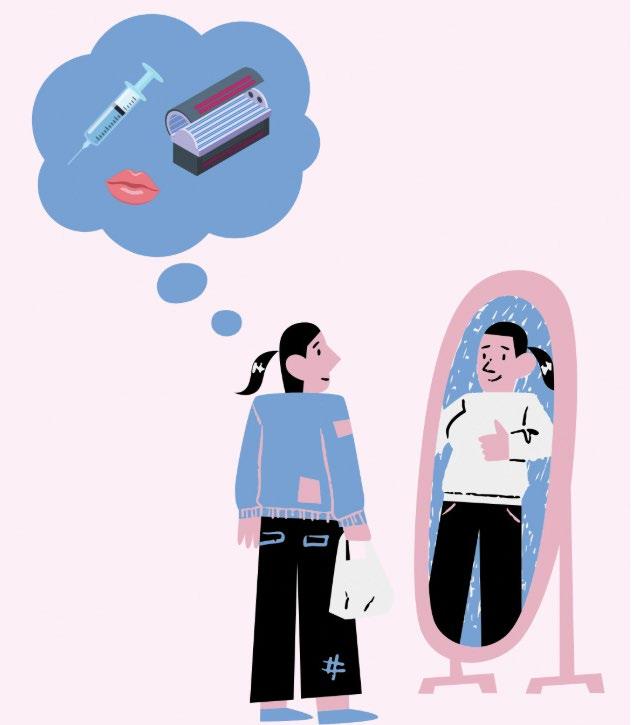
Graphic by Flannery Lemmonds
migrated and the years of Botox affect the way your face moves?
Overdone fillers and Botox can end up distorting your face and making you appear older, when in reality, we are at the age that our natural skin is at its healthiest and fullest.
It is impossible to have a discussion on this topic without including the impact social media has had on our perception of ourselves. Social media is often our basis for how we think we “should” look, creating insecurities in ourselves that we never knew we had.
Seeing models and influencers having tanned skin in December, and thick, full lips and cheeks, makes us believe that that is what’s normal in all stages of life. This has caused girls to make these changes to their appearance as soon as they turn 18, built on years of insecurities formed through social media.
We all have insecurities; it is just part of being human. I would be lying if I said I hadn’t considered a lip flip a time or two, or complained about my pale complexion in the
winter.
However, it is important to consider if the solution to our insecurities is from a needle or a tanning bed, or from gradual self-acceptance of our features and reflection about what is actually making us feel insecure about them.
Eating a balanced diet, getting exercise and engaging in daily hygiene and self-care practices are just small ways you can not only boost your self-esteem, but also increase your overall health as well.
Everyone’s individual features are what come together to make them unique — what fun would life be if everyone looked the same?
Columns and letters of The Daily Beacon are the views of the individual and do not necessarily reflect the views of the Beacon or the Beacon’s editorial staff.
TREVOR MCGEE Sports Editor
Game three of Tennessee baseball’s Orange & White World Series came down to the seventh inning on Sunday, ending in dramatic fashion.
Team Orange, guided by coach Kirby Connell, faced a one-run deficit heading into the final inning of play — when errors on Team White, led by coach Ethan Payne, opened the door for a comeback. A defensive miscue at second base by Ethan Moore plated the tying run, then some errant pitches by Brady Frederick brought the leading run in as Team Orange escaped with a 5-2 victory in a winner-take-all finale to cap the fall.
The competitive intrasquad scrimmage served as the bow to an offseason that head coach Josh Elander described as chaos.
“It was interesting,” Elander said. “It was a lot of fun, but it was good to see the guys.”
Tennessee’s offseason consisted of losing its national championship-winning head coach, going through a four-day coaching search and having two of its scheduled scrimmages open to the public canceled. That included Sunday’s finale, which was originally scheduled to be played at Covenant Health Park in downtown Knoxville, but was moved to the active construction site at Lindsey Nelson Stadium due to threatening weather.
Team Orange’s win came after splitting the first two games. Team White took the opener, 6-0, before Team Orange rallied for a 6-4 win in game two.
“For our team to be able to be split down the middle and still have that real SEC vibe over this last three days gives us a lot of confidence moving forward into the spring,” Elander said.
The Vols tallied a combined 12 hits in game three, struggling through some dominant pitching. Freshman slugger Hutson Chance mashed a homer in the first inning, but it was the lone extra-base hit of the afternoon.
Team Orange garnered nine hits, while Team White managed three. That was due in part to touted freshman pitcher Cameron Appenzeller, who dealt 3.2 innings, allowing two hits and one earned run. He retired the first eight batters of the game before allowing a single.
It’s an overhauled pitching staff after losing two first-round picks from the starting rotation. Tennessee attacked the portal, bringing in five pitchers from various schools.
“It’ll be a different look for sure,” Elander said. “Maybe not as much power as we’ve had in the past, but I think we’ll be (able to) kind of mix and match a little bit more than we have.”
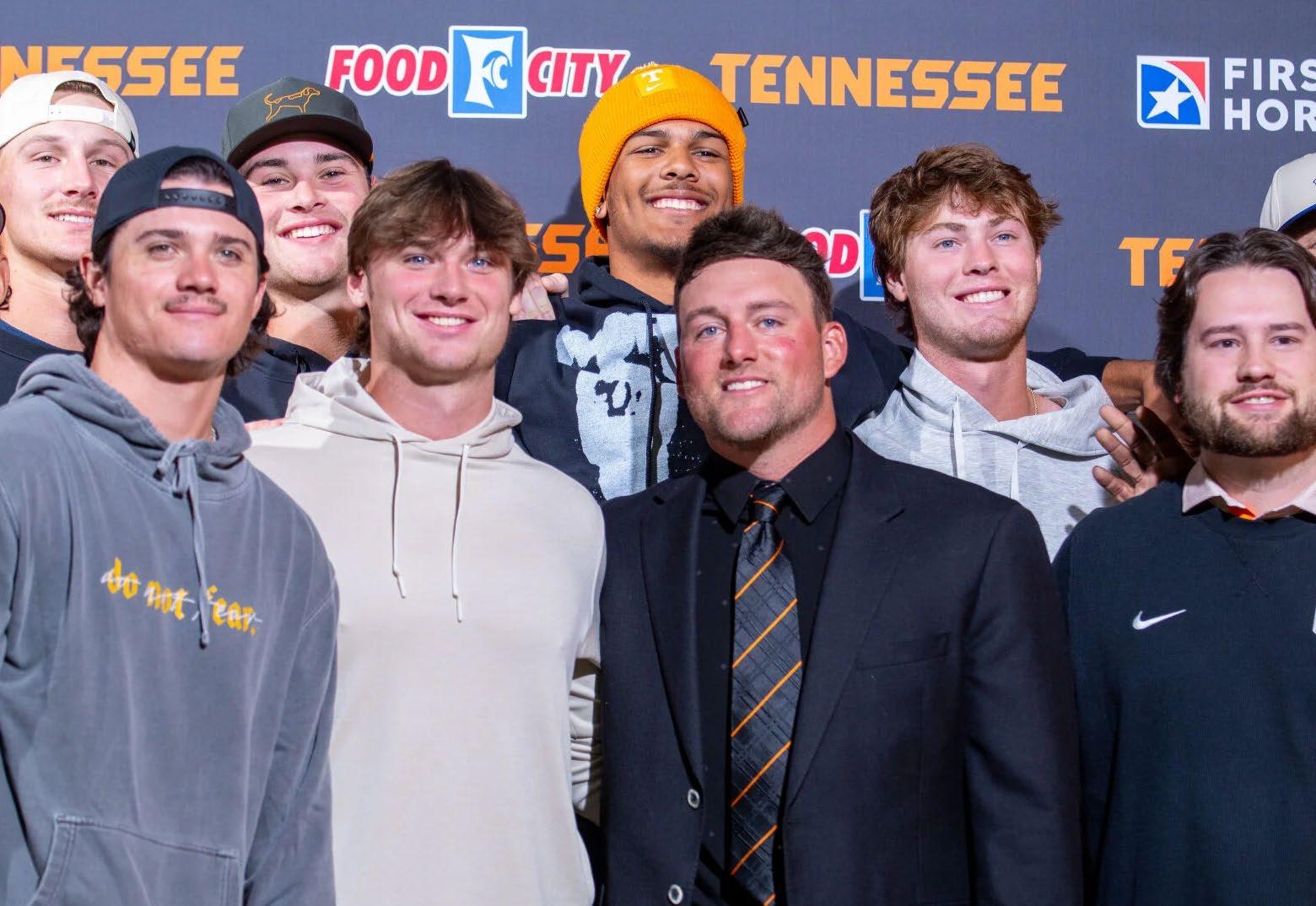
Tennessee baseball players visit Josh Elander’s introductory press conference as the new head coach of the program. Monday, Oct. 27, 2025. David Smith / The Daily Beacon
Still, in the pitching corps, the Vols return sophomore Tegan Kuhns, who carved out a role as a weekend starter, and flamethrowing lefty Brandon Arvidson, who drew MLB Draft buzz with a strong finish last season.
Arvidson provided the toughest at-bat this fall, according to touted transfer Henry Ford. The two had a $100 bet going against each other to see who could win the battle. They faced off twice, with Ford mashing a homer and Arvidson recording a strikeout — leaving the bet even as the fall concludes.
Ford’s prowess at the plate then highlights a group of hitters that provides versatility. The Vols return notable starters Reese Chapman and Manny Marin, alongside other penciled names like Jay Abernathy, Chris Newstrom and Levi Clark. They also brought in hitters like Ford, along with Rice transfer Blaine Brown, Bowling Green transfer Garrett Wright and junior college transfer Tyler Myatt.
On the hitting side, returnee Blake Grimmer was labeled as the hardest out from fellow Virginia transfer Evan Blanco. Grimmer logged 44 at-bats last season, tallying a .318 batting average with a quartet of blasts.
“For me, that’s lefty on lefty, but he is a guy
if he gets two strikes, he’s going to fight and claw his way back in the bat, and eventually put a ball in play,” Blanco said. “He’s a tough guy to swing and miss.”
The combination of hitters provides confidence for the road ahead.
“I think we have guys who can do everything, guys who hit it for power, and for average, you know, whatever it may be,” Ford said. “I think it’s going to be really fun. There’s a lot of depth.”
Even through the uncertainty that this offseason brought, having fall ball under the belt provides the first bit of stability — and a greater knowledge of what this season’s roster entails.
“I think it’s just a really gritty group, a really hard-working group,” Ford said. “I think it’s a really tight-knit group as well. Everybody loves each other and is there for you whenever you need help and the extra hitting, whatever. Like, give feedback, always have your back.”
Blanco sees the same perspective from the pitching staff. He credits it to be a deep unit that is fueled by unity.
“Everyone’s looking to push each other
and get the best out of everyone,” Blanco said. “And I think that’s extremely rare in college baseball because there are young guys that don’t understand the team aspect, and, you know, we have, from top to bottom, young to old, we have guys that definitely do understand what it takes to win at this level.”
Now that Elander is off and running with the job that he earned on Oct. 25, he has received full backing as the offseason enters its next stage.
“The most important thing that I found out from this whole experience was how the team, I think like, came together and we got like an added spark of energy because of that situation,” Blanco said. “And once Elander was kind of named head coach, we definitely caught a second gear in this fall.”
Tennessee baseball begins its 2026 campaign on Feb. 13 against Nicholls State.
“This is still the SEC,” Elander said. “Like, once those lights come back on, when we get this stadium done and the electricity locked back in, it’s the SEC, so it’s time to compete. So making sure we have that, but also checking the boxes along the way to make sure we’re ready for the challenges ahead.”
TREVOR MCGEE Sports Editor
Linda Williams was sitting in the stands at Stokely Athletic Center on Feb. 17, 1979.
When the regular Smokey mascot did not show up for Tennessee basketball’s regular season, Candice Callum, a cheerleader on the spirit squad, and her next-door neighbor, located Williams in the crowd. Callum knew that Williams had been the mascot during her time as a student at nearby Halls High School, and called upon her to fill in as Smokey for the night.
“She said, ‘Could you do it tonight?’ And I don’t think I said anything intelligent after that, because I was so excited,” Williams said. Tennessee went on to defeat Kentucky 101-84, and Williams solidified the gig for the remainder of the basketball season. Williams’ stint to close the 1979 basketball season, however, did not earn her the title of the first female Smokey in Tennessee history.
That belongs to Nancy Nelson, the daughter of the renowned broadcaster, Lindsey Nelson. Nelson is tagged as the school’s first-ever costumed Smokey, but she was not voted on for the position. Williams claims to have come across Nelson on a Knoxville News Sentinel message board, where she recalled a particular interaction that settled the debate.
“I have always said I was the first voted on elected female Smokey, but there was a girl that wore the costume a couple of times,” Williams said. “… and I gave her the credit, and she saw that, and she was like, ‘I’m surprised anybody even knew that.’ “... She was like, ‘I don’t really count myself as having been the mascot,’ but she said, ‘I did do it for a couple games before I could move up to the (cheer) squad.’”
When the fall of 1979 rolled around, it was Williams’ chance to earn the spot. Alongside 23 other Smokey contestants — all other guys — Williams had to show up prepared to perform a skit. She was assigned a day in the life of Smokey, from waking up, to getting ready and then running out on the field.
Her familiarity gained a leg up in the process, and eventually she was selected — becoming the first female to earn the Smokey position through a tryout process. Then it began, traveling with the 1979 football team to Chestnut Hill, Massachusetts, for the season opener against Boston College on Sept. 15.
Williams had attended a party the night before with Boston College’s cheerleaders, where they warned her to ‘be careful’ and to ‘relax’ at the beginning of the third quarter. Unknowst of what was to come, Williams brushed it off.
But when the third quarter of the game
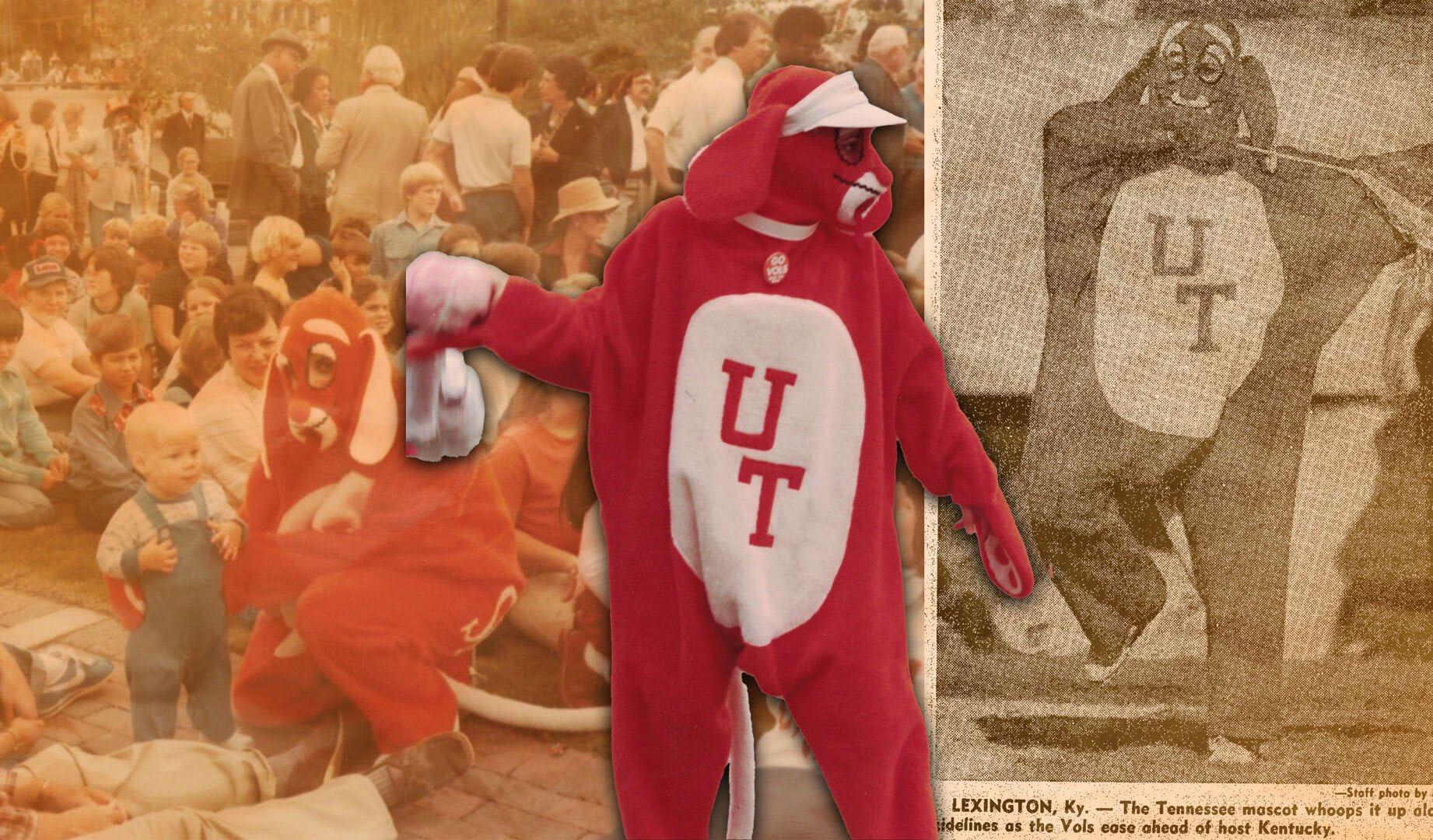
began, Williams was ‘kidnapped’ by the Boston College students. They began passing her up the rows toward the top of the lower bowl, ripping off her tail and her shoes in the process. But as Williams made her way up, the students tossed her in the air.
“‘Let’s throw him again,’” Williams recalled. “And I went, ‘No.’ And they were so funny, they went, ‘Oh, my gosh, it’s a girl.’ And they put me down, and they found my shoe and my tail, and they slowly passed me back down. Every time they threw me up in the air, I could look out at the football players on the football field just looking up, going, ‘What are they doing to her?’”
That was her introduction to Tennessee football, from Smokey’s perspective.
Her stories continued throughout the season, but the most pressing came during rivalry week on Dec. 1 against Vanderbilt. Growing up a Tennessee fan, Williams already possessed a dislike for the rival Commodores. But her experiences on that December day furthered to hatred.
As Tennessee’s band formed the infamous pregame “T” on the field, Vanderbilt ruined the operation. The Commodores had run through it backwards, Williams claims, breaking instruments in the process. A scuffle broke out.
‘The Vanderbilt players are on their side, laughing at our players,” Williams said. “Our players are livid, and one of them screams, and I have no idea who, but one of them
screamed, ‘That’s the last time they’ll run through our damn band.’ And a free-for-all broke out, and I was right in the middle of it.”
Williams said she was swinging her fists, forced to fend for herself.
“My mom said it was the funniest thing she ever watched, because she could just see my head bobbing and my fists flying, like I thought I was going to hurt somebody,” Williams said.
Through all the stories she had during her time as Smokey, the stint lasted that lone year. Across her nine years of college, Williams wanted to dabble in everything offered. She moved on to join the Pride of the Southland band the following year, mending friendships she created as a mascot. She also spent time as an intern with the athletic department, working alongside legendary Pat Summitt.
But her days as Smokey encapsulated her college experience more than anything.
“It was bigger than the mascot,” Williams said. “It was me getting to be a really small, tiny, minuscule part of the story of the University of Tennessee. And that is something that can never be taken away, and I wouldn’t trade it for anything on this planet.”
Her services were needed once more after moving on, however. When the acting Smokey could not make the trip to Eugene, Oregon, for the AIAW National Championship in 1981, Williams was called again. Though the Lady Vols lost to Louisiana Tech in the
championship game, it was another memory in the collection for Williams.
“I’ve been really blessed,” Williams said. “I’m sitting here in a room now that has all these pictures hanging up from over the years … It’s something that you carry with you forever.”
Once her tenure concluded, she was fortunate enough to bring the costume home with her for display. The handmade costume, fit to size for Williams, is now used once a year.
As a now-resident of Bowling Green, Kentucky, she pulls it out for Halloween.
“It scares them all,” Williams said.
Despite living 3.5 hours away now, Williams still makes the commute to Knoxville on the regular. She is in her 57th year of attending Tennessee football games, holding season tickets with her husband, Doug.
When she returns to Neyland Stadium each Saturday, the memories come flooding back.
“Whether anybody ever remembers it or not,” Williams said, “I can look on that field and say, ‘I was on that field.’”
Though it was just one chapter in her life, it’s one that Williams continues to see unfold.
“Looking back on it, it has become a point of pride for me now that I was the first,” Williams said. “But at the time, it just was, ‘Oh, my God, I get to be on the field. I get to run out of the T.’ Every time they open that T, I go, ‘I got to run out of that T.’ I mean, how many people can say that?”
ALEX SARKIS Asst. Sports Editor
There’s no way to sugarcoat it.
Tennessee football’s national championship aspirations came to a disastrous end when it lost to Oklahoma and picked up a dreaded third loss. Now, the Vols want to keep the right side of their record column stagnant as they stare down the barrel of some tough games to close out the season. Finishing strong is the memo inside of the Tennessee locker room, a notion that each member of the Vols had plenty of time to ponder over through the bye week.
The SEC’s annual late-season tune-up game slots itself into Tennessee’s Week 12 slot, a matchup with New Mexico State that will feature this year’s iteration of the Vols’ Smokey Grey uniforms. Aside from the different look, Tennessee is going to have to find a way to get up for its first game out of the College Football Playoff race.
“I want to see growth,” head coach Josh Heupel said. “That’s a lot of different things in a lot of different areas. This is our next opportunity. We’ve got good work in the middle part of last week. What happens after, you can’t control any of that. So it’s the same thing we’ve talked about consistently in our program, all phases of the year, control and win right now.”
While this week’s main focus is on New Mexico State, the real meat left in Tennessee’s schedule comes with a pair of rivalry battles in the last two games of the year. A road bout with Florida and the season finale with Vanderbilt in Neyland Stadium give the Vols a chance
to get some last laughs on some of their oldest foes.
Tennessee hasn’t sniffed a road victory against the Gators since the 2003 season, and if it can’t take care of business in Gainesville on Nov. 22, it will have to wait until 2029 to try again. Florida didn’t make the cut to be one of the Vols’ three permanent rivals in the new SEC scheduling format, so an imminent brief delay in the series brings extra juice into the programs’ 54th meeting.
“There’s a lot of pride on this team,” quarterback Joey Aguilar said. “Saturday wasn’t what we wanted, but we still have a lot to play for. We’re blessed to have three more games on our schedule and two of those games are super exciting games, big rivalry games, super fun environments. We’re gonna attack it week by week and face the opponents as we see them.”
Despite speculation, Aguilar is among a Tennessee leadership group playing their final snaps of college football. With some NFL futures uncertain, this stretch run could contain some of the last meaningful reps for a number of names on the roster.
Even for those with remaining eligibility, ending the season on a high note is of utmost importance.
“Leadership is very good,” Aguilar said. “All three sides of the ball, offense, defense, special teams, a team that stays together and still unites as one after games like we’ve had, losses like we’ve had. Just little simple mistakes. To play for a team, be on a team that still fights, everybody still encourages each other and has each other’s back is something you don’t see a lot.”
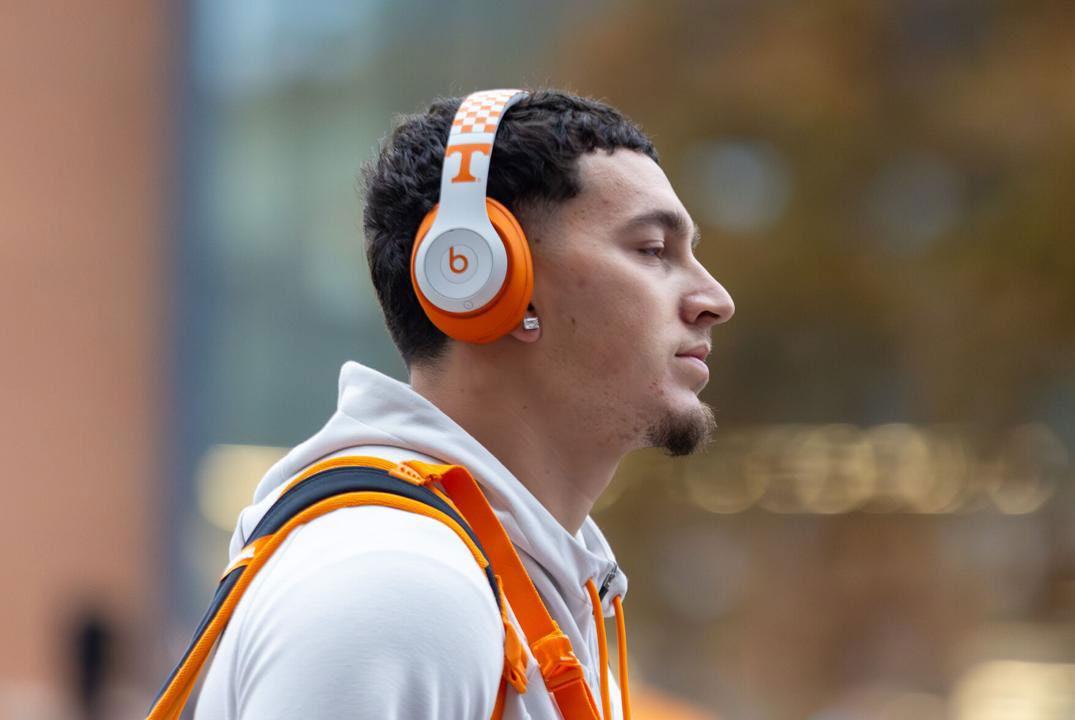
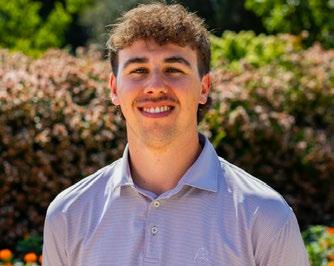
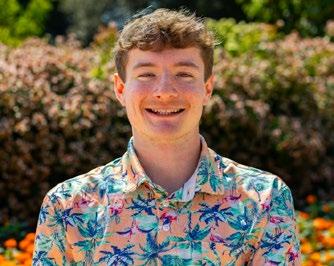




New mexico state 21 vs. tennessee 62 texas vs. georgia
oklahoma vs. alabama notre dame vs. pitt iowa vs. usc
michigan vs. northwestern usf vs. navy
New mexico state 13 vs. tennessee 52 texas vs. georgia
oklahoma vs. alabama notre dame vs. pitt
iowa vs. usc
michigan vs. northwestern usf vs. navy
New mexico state 13 vs. tennessee 48 texas vs. georgia
oklahoma vs. alabama notre dame vs. pitt
iowa vs. usc
michigan vs. northwestern usf vs. navy
New mexico state 13 vs. tennessee 52 texas vs. georgia
oklahoma vs. alabama notre dame vs. pitt iowa vs. usc
michigan vs. northwestern usf vs. navy
New mexico state 13 vs. tennessee 54 texas vs. georgia
oklahoma vs. alabama notre dame vs. pitt iowa vs. usc
michigan vs. northwestern usf vs. navy
New mexico state 14 vs. tennessee 50 texas vs. georgia
oklahoma vs. alabama notre dame vs. pitt
iowa vs. usc
michigan vs. northwestern usf vs. navy